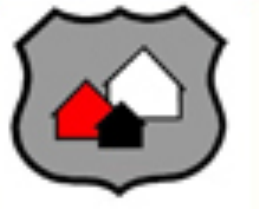
CITY OF SAN DIEGO
CRIME-FREE MULTI-HOUSING PROGRAM
Working to Keep Illegal Activity Out of Rental Property
A Collaborative Community Policing Program between the City of San Diego,
San Diego Police Department and SAY San Diego
SDPD Chief of Police
Shelley Zimmerman
CFMH Program Administrator
SDPD Assistant Chief Todd Jarvis
CFMH SDPD Liaison
Officer Luis Roman
Mayor Kevin Faulconer
Council President Sherri Lightner
Council President Pro Tem Marti Emerald
Councilmember David Alvarez
Councilmember Myrtle Cole
Councilmember Lori Zapf
Councilmember Mark Kersey
Councilmember Scott Sherman
Councilmember Chris Cate
SAY San Diego CFMH Program Coordinator
Marsha Lyon, Central Region Prevention Coalition
SAY San Diego Program Directors
Mary Baum, Central Region Prevention Coalition
Karen Lenyoun, North City Prevention Coalition
Copyright © 2009 by International Crime Free Association. All rights reserved. No parts of this
book can be produced or transmitted in any form or by any means, electronic or mechanical,
including photocopying, recording or by any storage or retrieval system without written permission
from The International Crime Free Association Crime Free Multi-Housing Program, except for the
inclusion of quotations in a review.
Copyright
©
2009 by the Western Regional Chapter of the International Crime Free
Association/Crime
Free
Partners. Portions of this workbook are reprinted and/or modified with the
permission
from the International
Crime Free Association, the original developers of the Crime Free Multi-Housing Program, to comply with
the Legal Issues within the State of California.
The editorial decisions, reprinted and added texts are made by the Western Regional Chapter of the
International Crime Free Association/Crime Free Partners, and do not necessarily reflect the views or
opinions of the
International
Crime Free Association. These materials are
copyrighted
by Western Regional
Chapter of the
International
Crime Free
Association/Crime
Free Partners, and may not be
duplicated
without
permission from International Crime Free Association.
Copyright
©
is granted to all law enforcement agencies at no cost, for the purposes of maintaining quality
control of materials and a list of agencies participating in the International Crime Free Multi-Housing
Program.
Various parts of this document provide
descriptions
of legal process. Those
descriptions
are
intended
only as
general summaries to foster understanding. No part of this manual should be regarded as legal advice or
considered a replacement for the landlord’s responsibility to be familiar with the law. This manual is
distributed with the express understanding that neither the publisher nor the author is engaged in
rendering
legal advice. If legal
assistance
is
required,
the
services
of a
competent
attorney should be sought.
We particularly urge that an experienced attorney be brought into the process in any situation that has the
potential to become adversarial.
This manual is intended to address aspects of property management that may be important to the control and
prevention of illegal activity on rental property. In the event
information
is used from this book, the Western
Regional Chapter of the Internal Crime Free
Association/Crime
Free Partners assumes no responsibility for
any claim or lawsuit which is initiated or pursued.
Graphics are courtesy of The Mesa Arizona Crime Free Multi-Housing Program, WordPerfect, Microsoft
Word, and several graphic artists on the Internet.

Table of Contents
Overview..........................................................................................................................................v
PART ONE - Crime Prevention
Does It Work.............................................................................................................................1
Criminals Are Like Weeds ....................................................................................................... 1
Understanding Crime Prevention ............................................................................................. 2
Risk (Loss) Management ..........................................................................................................2
Managing Your Risks .............................................................................................................. 3
Set Rules ...................................................................................................................................6
Target Hardening ......................................................................................................................7
PART TWO - What Is The Crime-free Multi-housing Program?
Where It Began .......................................................................................................................9
How It Works..........................................................................................................................9
Who Should Attend.................................................................................................................10
Phase I: Training......................................................................................................................10
Phase II: C.P.T.E.D. Inspection ..............................................................................................10
Phase III: Resident Engagement & Full Certification................ ................ ...........................11
Phone In Requests ...................................................................................................................12
Maintaining Crime-free Signs ................................................................................................12
PART THREE - Crime Prevention Through Environmental Design
Safe By Design .......................................................................................................................14
Improve Surveillance ..............................................................................................................14
Improve Access Control .........................................................................................................16
Improve Territoriality .............................................................................................................17
Improve Activity Support .......................................................................................................19
Troubleshooting ......................................................................................................................19
The 3 “D” Concept of C.P.T.E.D. .......................................................................................... 20
Solving Conflicts With C.P.T.E.D. Concepts .........................................................................21
C.P.T.E.D. Lighting ................................................................................................................22
Goals of Lighting ................................................................................................................... 23
Types of Outdoor Lighting .....................................................................................................24
Light and Lamp Comparison ..................................................................................................28
PART FOUR - The Application Process
It’s Worth The Effort .............................................................................................................30
What are the Protected Classes? .............................................................................................30
What about Non-Protected Classes? .......................................................................................31
What about Criminal Behavior? .............................................................................................31
Disclosure ...............................................................................................................................32
Self Refusals ...........................................................................................................................32
Verify The Information Given ................................................................................................36
Refusing An Application ........................................................................................................3
PART FIVE - Common Sense Self Defense
Awareness Is The Key ............................................................................................................38
Working After Dark ................................................................................................................38
Employee Training Programs .................................................................................................39
Stay In Touch ..........................................................................................................................39
Armed Robbery Prevention ....................................................................................................39
PART SIX - Community Rules and Lease Agreements
Use A Current Lease Agreement ............................................................................................42
Use Of The Crime-free Lease Addendum...............................................................................43
Communication Is The Key ....................................................................................................45
No Business Clause.................................................................................................................46
PART SEVEN - Building Apartment Communities
Not A Complex .......................................................................................................................47
Not A Police Problem .............................................................................................................47
Problem Solving......................................................................................................................48
How To Begin .........................................................................................................................49
Form vs. Function ...................................................................................................................49
The Next Step .........................................................................................................................50
Closing The Deal ....................................................................................................................50
Keep It Going..........................................................................................................................51
PART EIGHT - Active Property Management
Taking A Complaint ...............................................................................................................52
Routine Property Inspections ..................................................................................................52
Good Property Maintenance ...................................................................................................53
PART NINE - Combating Illegal Activity
Who’s Job Is It? ..................................................................................................................... 54
The Displacement Theory .......................................................................................................54
Civil Laws vs. Criminal Laws ................................................................................................55
Taking Action .........................................................................................................................56
Possession of Firearms............................................................................................................57
Gang Membership...................................................................................................................57
Drug Paraphernalia .................................................................................................................58
General Disturbances ..............................................................................................................58
Who Has The Power? .............................................................................................................58
Trespassing .............................................................................................................................59
Attempted Murder..................................................................................................................59
Management’s Responsibility.................................................................................................60
Resident’s Responsibility .......................................................................................................61
A Ten-Step Process .................................................................................................................62
PART TEN - Partnership With The Police
The Police Will Not Talk To Us ...............................................................................................63
Privacy Laws............................................................................................................................64
How To Approach The Officer ................................................................................................64
Establishing More Security…………...........................................................................................65
Requesting An Extra Patrol ....................................................................................................65
Narcotics Surveillance .............................................................................................................66
Management Surveillance.........................................................................................................66
“But I’m Scared!”.....................................................................................................................67
PART ELEVEN - Dealing With Non-Compliance
First Things First.....................................................................................................................68
Do Your Homework................................................................................................................68
Set Your Policies.....................................................................................................................69
Don’t Be Complacent .............................................................................................................69
Know Your Responsibilities ...................................................................................................70
Service of Notice Documents……..........................................................................................70
Success Stories of the Crime Free Multi-Housing Program ...................................................72
The Ultimate Detainer Procedure ...........................................................................................73
v.
San Diego Police Department Crime-free Multi-Housing Program Workbook – 06-2013
PART TWELVE – Fire Department Manual
Forward……………………………………………………………………………………..74
Exiting Systems ......................................................................................................................75
Address ...................................................................................................................................75
Fire Alarm Systems.................................................................................................................76
Fire Sprinkler Systems ............................................................................................................76
Fire Extinguishers ...................................................................................................................77
Fire Lanes................................................................................................................................77
Emergency Medical Services..................................................................................................78
Pool Safety ..............................................................................................................................78
Single Station Smoke Detectors .............................................................................................79
Chemical Storage/Flammable and Combustible Liquids Storage ..........................................80
Cooking Inside Clubhouses and Recreational Areas ..............................................................80
Locks/Lock Boxes ..................................................................................................................80
Heating and Ventilation Units ................................................................................................80
Laundry Rooms.......................................................................................................................81
Dumpsters ...............................................................................................................................81
Electrical .................................................................................................................................81
Barbecue Grills .......................................................................................................................82
LPG/Natural Gas.....................................................................................................................82
Working with the Fire Department .........................................................................................83
Fire Emergency Guides...........................................................................................................83
Community Newsletter ...........................................................................................................84
Conducting Property Inspections ............................................................................................84
Apartment Checklist…………………………… ...................................................................85
v.
San Diego Police Department Crime-free Multi-Housing Program Workbook – 06-2013
Overview
Rental
properties
present a unique
challenge
for law
enforcement.
The typical
Neighborhood
Watch approach
to residents in single family homes is not easily adapted to rental communities. In single family homes,
owners generally have a large cash investment in the purchase of their home. This motivates owners to a
greater concern about crime in their neighborhoods. With rising crime rates come lower property values.
An owner of a single family home might also be looking at a long term of residency. Typically, homeowners
have a
thirty-year
mortgage for their property. Home is where they come each day and perhaps raise a family.
There tends to be a lot of pride and ownership of their property. When crime problems begin to appear,
owners are very likely to organize Neighborhood Watch activities to protect the long-term interests of their
families.
In rental properties, the
communities
tend to be more transient. Most often, residents sign a six-month,
nine-
month,
or a
twelve-month
lease for a rental property. In many cases, owners
don’t
even require leases, and
residency is based on a month-to-month agreement. This allows for an occupant to move very easily if they
feel crime has reached a level they will not
tolerate.
It is easier to move away from crime than to confront it.
The police have
historically
fought a losing battle with
Neighborhood
Watch in
multi-family rental
properties.
The result was the
Crime-free
Multi-housing Program
implemented
by Mesa,
Arizona
in July of 1992. This
bold, new program had no precedent. The program’s concept was to take a multi-faceted approach to
crime prevention. A unique coalition of police, property managers and residents of rental properties,
the program was to be an on-going program with a three-phase approach to address all of the opportunities
of crime in rental property.
The
program
was
designed
to include a
certification process,
never before offered by a police
department.
The
incentives of police-issued signs, certificates, and advertising privileges provided immediate interest in the
program.
The development of the Crime-free Lease Addendum proved to be the backbone of the Crime-free
Multi-housing Program
.
This addendum to the lease agreement lists specific criminal acts that, if
committed on, or about, the property, will result in the immediate termination of the resident’s lease.
The Crime-free Multi-housing Program achieved almost instant
success.
In rental properties with the
highest crime rates, the immediate results showed up to a 90% reduction in police calls for service. Even in
the best properties reductions of 15% to 20% were not uncommon.
The Crime-free Multi-housing Program began to spread nationally after the first year, and
internationally
after the second year. The Crime-free Multi-housing Program has been a success all across
the United States and Canada.

TYPICAL
RESPONSE
S
TO
CRIME INCLUDE:
FEAR
,
WITHDRAWAL, DISTRUST,
OVER-REACTION AND DENIAL.
SUSPICION AND FEAR
PREVENT
THE DEVELOPMENT
AN
D
GROWTH
OF HEALTHY AP
ARTMENT
COMMUNITIES
.

Workbook – 06-2012
1
San Diego Police Department Crime-free Multi-Housing Program
PART
ONE
C
C
R
R
I
I
M
M
E
E
P
P
R
R
E
E
V
V
E
E
N
N
T
T
I
I
O
O
N
N
Does it work?
Many people feel helpless against crime, because too often crime is seen as an inevitable part of our
society. It has been said, “If a criminal WANTS to get you, he’ll get you.” This belief leads to
helplessness, fear and apathy. Apathy is one of the most dangerous elements in society today. When
law-abiding citizens refuse to go outside after dark, they have voluntarily turned over their
neighborhoods to the ones who commit the crimes.
Criminals Are Like Weeds
Many times a community will not fight crime because they feel they can’t be successful. Often,
people view dangerous criminals like a large rock that can’t be moved, or even be budged.
Dangerous criminals are NOT like rocks; they are more like weeds. Unlike an inanimate rock, a
weed will grow. As a weed grows, it roots, it
sprouts and it chokes out healthy plants. A
single weed quickly overtakes an entire garden.
When criminal activity is allowed to flourish,
the effect is the same.
The typical police approach to crime is REACTIVE. Once a crime has been committed, the police
officer responds, writes a police report and begins the preliminary investigation. It is certainly more
humane and cost effective to prevent a crime from even occurring. Crime Prevention is the
PROACTIVE side of law enforcement. Crime Prevention is more desirable because it addresses
the potential for crime before it becomes a
serious problem.
Unfortunately, many people don’t address
crime situations until it is too late. A good
example is the victim of a burglary who
suddenly becomes interested in home security
systems (locks, alarms, security screens,
etc.).
Once a crime problem has gotten too large, it
is often easier to run away from it than face it.
Equate a crime problem to killing a dinosaur.
The easiest way to kill a dinosaur is while it’s still in the egg. Once the dinosaur has been given the
opportunity to grow, it becomes progressively harder to defeat. The same is true regarding criminal
activity.

Workbook – 06-2012
2
San Diego Police Department Crime-free Multi-Housing Program
Understanding Crime Prevention
In order to prevent crime, you need to understand crime,
plus, you need to understand the criminal mind. When
you think of criminals, think of predators. Most criminals
are like predators looking for the easy victim.
When you think of predators you might think of the lion.
When the lioness is hungry, she will go out to stalk her
prey. The lioness knows the
watering hole is a good place
to find food, as this is where
all the animals come to get
water. The lioness is a skilled
hunter. She knows the best
approach is from downwind.
This way she can smell the
herd, but they cannot smell her.
The lioness is also careful to approach slowly, staying low
in the tall grass to avoid detection.
At just the right moment, the lioness pounces into the herd. The lioness does not run past the injured,
the diseased or slowest ones in favor of the strongest one at the lead of the pack. In fact, it usually is
the one that is injured, sick or simply NOT PAYING ATTENTION that gets attacked. This is
called survival of the fittest or thinning the herd.
The two-legged urban breed of predator, the criminal, works the same way. They stalk their victims,
looking for the easy prey. To be successful against an attack, you don’t necessarily have to be the
strongest one, but you don’t want to be the weakest!
Lions only hunt when hungry; but criminals are always a danger. This is why crime prevention is so
important. Crime prevention is a shared responsibility. It cannot be imposed solely on the Police
Department. Crime is a community problem -- Crime Prevention must be a community effort.
Risk (Loss) Management
When assessing the potential for crime, it is important to decide whether to accept the risk (risk
acceptance), without investing in counter measures, or to take sometimes costly steps to reduce the
risk (risk transference). Transferring the risk may involve spending a little money now to save much
more later on.
There are other less expensive ways to prevent crime. This includes the removal of the elements
necessary for a crime to occur (risk avoidance). There are also ways to reduce the risk, or spread the
risk to reduce losses. The following page demonstrates the types of risk management.
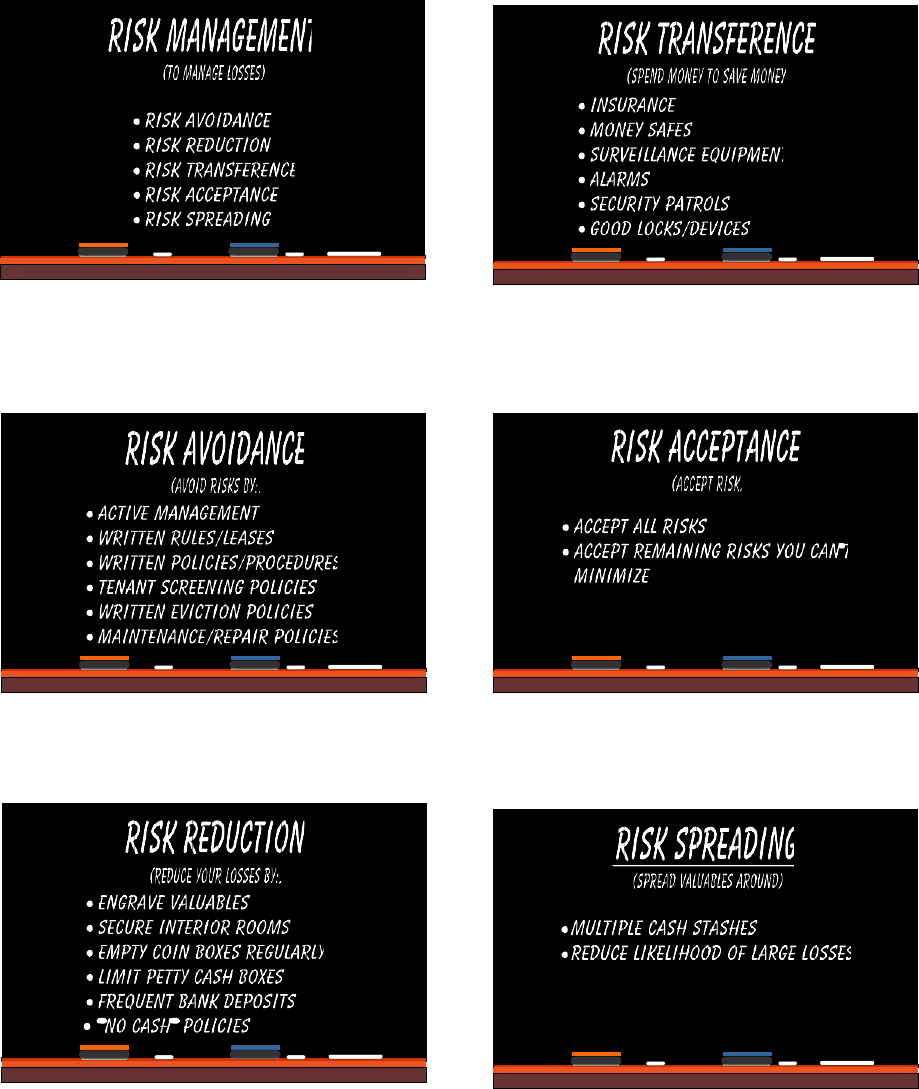
Workbook – 06-2012
3
San Diego Police Department Crime-free Multi-Housing Program
Managing Your Risks

FEAR
O
F
CRIME IS NOT ALWAYS
BASE
D
ON
ACTUA
L
CRIMES, BUT
RATHER
PERCEIVED
CRIMES.
WHILE ADOLESCENTS ARE
MOST
LIKELY TO
BE
VICTIMS
OF
VIOLEN
T
CRIME
S
&
THE ELDERLY
ARE
LEAST LIKELY, IT IS THE
ELDERLY
THAT GENERALLY HOLD
A HIGHER
FEAR
O
F
CRIME.
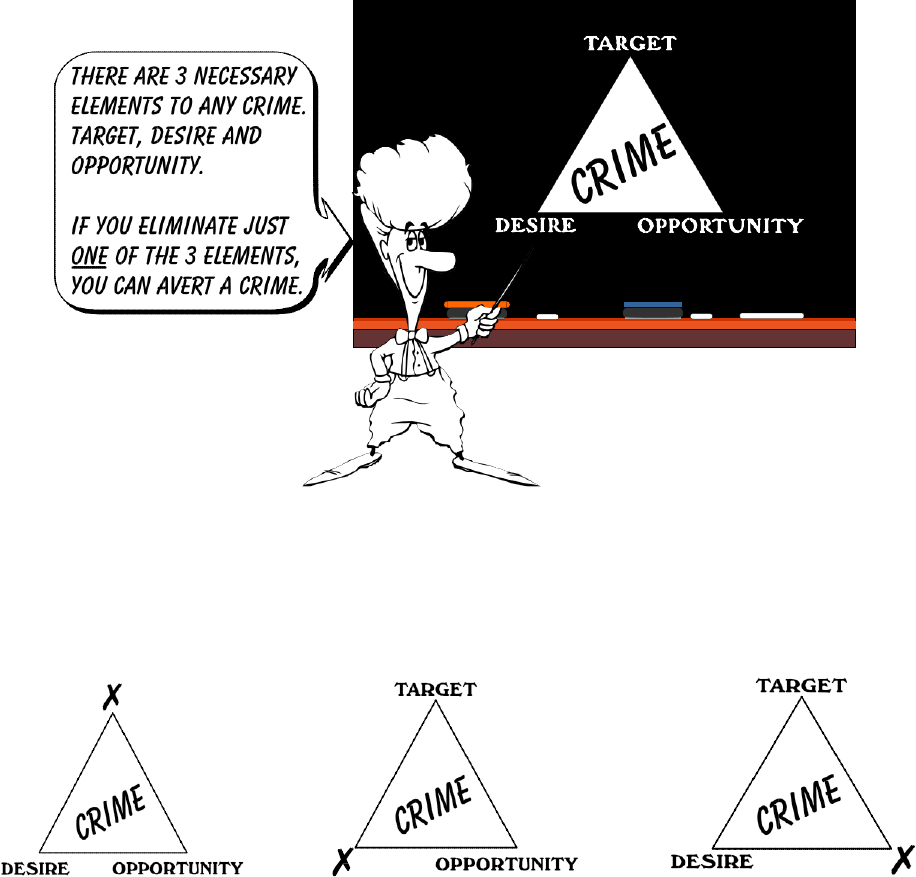
Workbook – 06-2012
5
San Diego Police Department Crime-free Multi-Housing Program
SCENARIO ONE
(Eliminate TARGET)
If a car thief comes to an
apartment community to
steal a Corvette, the
DESIRE is there. If all of
the residents are inside their
rental units, now the
OPPORTUNITY is there.
But if there isn’t a
Corvette on the property,
you will not have a crime
because there is no
TARGET.
SCENARIO TWO
(Eliminate DESIRE)
If a person sees a Corvette,
the TARGET, and all of
the residents are in their
apartments, allowing the
OPPORTUNITY for
crime, but the person who
sees the Corvette has no
DESIRE to steal the car,
again, you will have no
crime.
SCENARIO THREE
(Eliminate OPPORTUNITY)
If a person comes to the
property with the DESIRE
to steal the Corvette, and
sees the perfect TARGET,
but the residents of the
apartment community are
out in the recreation and
common areas, this will
reduce or eliminate the
OPPORTUNITY.
Workbook – 06-2012
6
San Diego Police Department Crime-free Multi-Housing Program
The Crime-free Multi-housing Program is effective because it addresses all three (3) elements:
TARGET, DESIRE AND OPPORTUNITY. To eliminate the TARGET, we teach how to
‘target harden’. To eliminate OPPORTUNITY, we train residents to be the ‘eyes and ears’ of
the community, and to eliminate the DESIRE, a concerted effort is made to keep those with criminal
intent from trespassing, visiting or living at the property.
Set Rules
If a person knows that rules are clearly stated and enforced, they are less likely to move into a
community to commit criminal activity. Have a back-up plan to discourage the more determined
individuals.
By careful screening and active management principles addressed in the Crime-free Multi-
housing Program, the criminal activity among residents and visitors can be virtually eliminated.
Safety Socials, which incorporate the principles of Neighborhood Watch, will encourage residents to
become an organized group of ‘eyes and ears’ for the property.
It is not uncommon to see once distressed properties show a 70% - 90% decrease in police calls for
service, as a result of the Crime-free Multi-housing Program.
In the City of San Diego there are nearly 232,000 rental properties. Nearly half (48%) of all San
Diego residents live in rental property. The managers of these rental properties all have one thing
in common...they all want more police patrol.
Even if San Diego Police Officers turned off their police radios and never answered a single 911
call for help, we would not have enough patrol cars to provide adequate security patrols for every
rental property. Now consider the majority of San Diego residents live in single-family homes.
They also want more police patrols up and down their streets and alleyways. Then there are the
grocery store managers that want more police patrol because a customer got her purse stolen, or an
automobile in the parking lot was stolen. Consider all the mini-malls, flower shops, and movie
theaters. Everybody wants more police patrol, but there just isn’t enough. Managers must take
their own precautions. Residents of rental properties must also be aware of their role in Crime
Prevention.

Workbook – 06-2012
7
San Diego Police Department Crime-free Multi-Housing Program
Target Hardening
Sometimes you cannot remove a target. However, you can harden the target. Target hardening
involves the use of locks, electronic devices, or other hardware that will DETECT, DENY, DELAY
or DETER the criminal away from the intended target. Target hardening is directed to all
structures, vehicles and personal property within the rental community.
DETECT:
By utilizing good security techniques, you can cause the person to make more noise, which
will increase the risk of detection. This may also persuade the person not to commit the
crime.
DENY:
By engraving valuables, using security electronic equipment, or by moving other valuables
out of view, you can remove the rewards received from a crime opportunity. If the
rewards are not there, this may persuade the person not to commit the crime.
DELAY:
Many times crimes are committed because of an easy opportunity. By using good crime
prevention techniques you can increase the time and effort needed to commit the crime.
This may persuade the person not to commit the crime.
DETER:
By utilizing the previous three techniques, you may prevent a crime from happening by
deterring the criminal from the property to an easier target elsewhere.
HOW THE 4
“D’s”
WORK
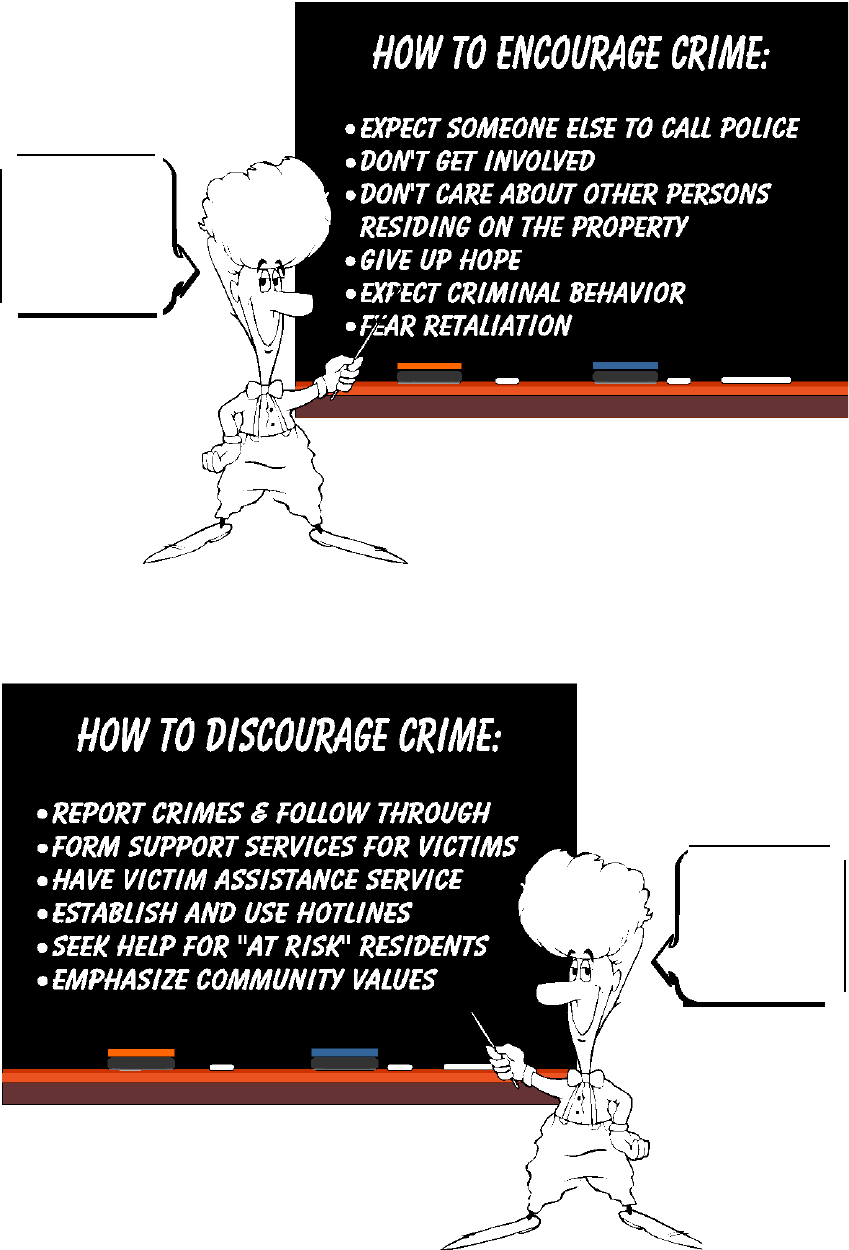
Workbook – 06-2012
8
San Diego Police Department Crime-free Multi-Housing Program
HOW RESIDENTS
ENCOURAGE
CRIME
...
HOW RESIDENTS
CAN DISCOURAGE
CRIME
...
Workbook – 06-2012
9
San Diego Police Department Crime-free Multi-Housing Program
PART
TWO
W
W
H
H
A
A
T
T
I
I
S
S
T
T
H
H
E
E
C
C
R
R
I
I
M
M
E
E
-
-
F
F
R
R
E
E
E
E
M
M
U
U
L
L
T
T
I
I
-
-
H
H
O
O
U
U
S
S
I
I
N
N
G
G
P
P
R
R
O
O
G
G
R
R
A
A
M
M
?
?
Where It Began
The Crime-free Multi-housing Program began in Mesa, Arizona in July 1992. It has spread across
the United States and to Canada in a very short time. It was designed to be law enforcement
driven.
How It Works
The Crime-free Multi-housing Program is a unique, three-phase certification program for rental
properties of all sizes, including single family rental homes. The first phase is the completion of
an eight-hour program given by SAY San Diego CFMH Program Coordinator and San Diego
Police Department. Frequently, guest speakers will also attend to address specific topics relating
to rental properties. This police-sponsored program is designed to be very effective at reducing
criminal activity in rental properties.
The Crime-free Multi-housing Program addresses these topics:
Understanding Crime Prevention
C.P.T.E.D. (Safe By Design)
Resident Selection
Common Sense Self Defense
Community Rules/Policies
Building Apartment Communities
Good Property Management
Combating Illegal Activity
Partnership with the Police Department
Partnership with the Fire Department
Dealing with Non-Compliance
The Federal Fair Housing Laws

Workbook – 06-2012
10
San Diego Police Department Crime-free Multi-Housing Program
Who Should Attend
Property owners, managers, leasing staff, maintenance personnel and others in the management team
should attend the entire 8-hour training program. It is also recommended that police officers attend
the training to understand the civil nature of rental communities, and to establish a rapport with
managers of rental properties.
Phase I: Training
After completion of the eight-hour training program, each participant will receive a certificate which
has been signed by the Assistant Chief of Police. The certificate is also signed by the program
coordinators of the Crime-free Multi-housing Program, who sponsor the training.
This certificate is to be immediately framed and displayed in the leasing office, or in a prominent
place where applicants are sure to see it. Prospective residents should be told as soon as possible that
the property management is working with the police to keep the community healthy. If there is no
leasing office, a certificate can be displayed in a 3-ring notebook with other materials used in the
Crime-free Multi-housing Program. The manager or owner should show the notebook to
prospective residents.
Participating managers should also begin immediate implementation of the Crime-free Lease
Addendum, which is the backbone of the Crime-free Multi-housing Program. This addendum to
the lease cites specific actions that will be taken by management if a resident, or somebody under
the resident’s control, is involved in illegal or dangerous activity on or near the rental property.
If the management is conducting a background check that includes credit and criminal
information, the applicant should be informed before they turn in the application or pay any
fees or deposits. Every prospective resident must be treated exactly the same. It is important to
develop office policies to ensure this.
Phase II: CPTED Inspection
In the second phase of the program, a CPTED-certified Team will inspect the rental property to
assess physical security and general appearance of the property. If the property meets the
department’s requirements, a second certificate signed by the Assistant Chief of Police will be
issued in the name of the apartment community.
This certificate will certify the property has met the minimum security requirements of the
Crime-free Multi-housing Program. The minimum security requirements are:
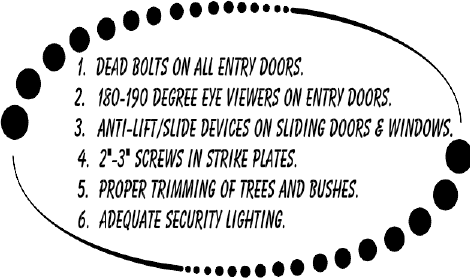
Workbook – 06-2012
11
San Diego Police Department Crime-free Multi-Housing Program
In some rare cases, one or more of these
standards may not apply to your property. In
these cases some exceptions can be made
depending on the overall security of the
complex.
Phase III: Resident Engagement & Full Certification
In the third and final phase of the program a Community Relations Officer with the San Diego
Police Department and a SAY San Diego CFMH Program Coordinator will conduct a Resident
Engagement meeting for residents at the rental property. This will include information about
general safety principles and crime prevention, including Neighborhood Watch information. This
is also an opportunity to explain the Crime-free Multi-housing Program.
Management is responsible for providing food, non-alcoholic drinks and entertainment for this
event. It is also recommended that property managers raffle door prizes as an added incentive to
draw residents to the meeting. It is necessary to conduct at least one (1) meeting per year to
maintain membership in the Crime-free Multi-housing Program.
During the Resident Engagement meeting, the apartment community will be awarded its full
certification. This certificate is the only certificate that has an expiration date. It is renewed each
year after the subsequent Resident Engagement meeting has been conducted.
After completion of the first resident engagement meeting, the management can post the Crime-free
Multi-housing Program signs on the property. It is recommended that one sign be posted at each
entrance to the property where prospective residents will see them.
The sign is the property of the San Diego Police Department, and permission to display the
sign can be revoked if the property is sold, the management no longer wishes to participate in the
Crime-free Multi-housing Program, a new manager takes over and refuses to be trained, or the
complex no longer meets the C.P.T.E.D. requirements of the program.
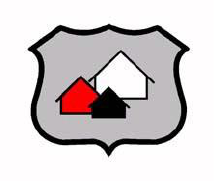
Workbook – 06-2012
12
San Diego Police Department Crime-free Multi-Housing Program
An added incentive to reach full certification is the use of the Crime-free
Multi-housing Program logo in all appropriate advertisements, as well as
on company letterheads, business cards and associated paperwork.
This logo has achieved a very high level of recognition in the United States
and Canada. It has proven very effective in attracting honest residents looking for safe housing. It
has worked equally well to discourage those looking for an apartment unit for conducting criminal
activities.
Phone-in Requests
An additional advantage to being fully certified is that people can call the police department for a list
of fully-certified properties.
Maintaining Crime-free Signs
It is the responsibility of the management to maintain and replace all lost or damaged signs, and to
contact the Crime-free Program Coordinator if this occurs.
Carefully consider how each sign is installed to prevent easy removal. Through bolts can be bent or
stripped to prevent removal. Signs can be attached with liquid nails and/or bolted to a building at a
height that cannot be reached.

IN
SPITE
OF LAWS
AN
D
THE
RISK
OF
APPREHENSION
,
SOME
PEOPLE ARE
STILL
CRIMINALLY
MOTIVATED.
C.P.T.E.D.
PRINCIPLE
S
CAN BE
USED TO DETECT, DENY,
DE
LAY
AN
D
DETER
CRIME BY
USING
PHYSICAL SECURITY
DEVICES
&
PSYCHOLOGICAL
SIGNALS TO MAKE
AN AREA
LES
S
VULNERABLE
TO
CRIME.
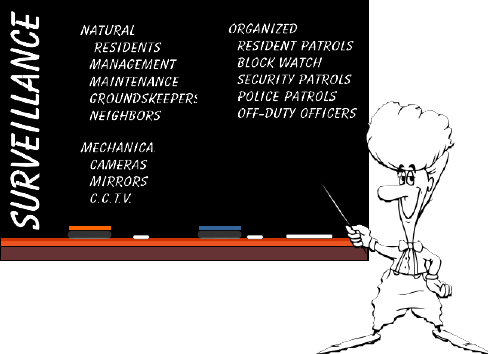
Workbook – 06-2012
14
San Diego Police Department Crime-free Multi-Housing Program
PART
THREE
C
C
R
R
I
I
M
M
E
E
P
P
R
R
E
E
V
V
E
E
N
N
T
T
I
I
O
O
N
N
T
T
H
H
R
R
O
O
U
U
G
G
H
H
E
E
N
N
V
V
I
I
R
R
O
O
N
N
M
M
E
E
N
N
T
T
A
A
L
L
D
D
E
E
S
S
I
I
G
G
N
N
Safe By Design
Crime Prevention Through Environmental Design (C.P.T.E.D.) is comprised of four (4) key
elements: Surveillance, Access Control, Territoriality, and Activity Support. C.P.T.E.D. is used
to develop safety into design. Virtually any property crime can be eliminated by using C.P.T.E.D.
Improve Surveillance
Surveillance is the first element of C.P.T.E.D. Surveillance is the ability to look into an area,
and the ability to look back out. It can be formal or informal. Formal surveillance is
generally organized, while informal surveillance is naturally occurring. Things that inhibit
surveillance are overgrown trees and shrubs, fences and poor lighting. Surveillance strategies are
aimed primarily at keeping intruders under observation and undesirable behavior under control. To
improve surveillance, trim trees and shrubs, use fencing appropriately and utilize proper lighting
techniques.
There are three types of surveillance to consider. Natural, Mechanical and Organized. The best
plan will involve some combination of all three types of surveillance.
Natural Surveillance is naturally occurring. As people are moving around an area, they will be able
to observe what is going on around them, provided the area is open and well-lighted. Natural
Surveillance is typically free of cost, but observers may choose not to get involved in any situation
that may pose a potential threat to themselves or others.
When considering surveillance of your
property, remember that casual observers
from neighboring properties might be willing
to report suspicious activity. All you need to
do is ask! It is a great idea to ask them to join
with your Neighborhood Watch meeting and
safety socials.
Mechanical Surveillance employs the use of
cameras, mirrors and other equipment that
allows an individual to monitor a remote
area.

VISIBILITY OF
RESIDENTS
&
RESIDENTS’ ACTIVITIES
ARE PERHAPS
TH
E
GREATEST
DETERRANT TO
CRIME.
BY PUTTING
COMMON AREAS
AN
D
OTHER
ACTIVITIE
S
CLOSER
TO
UNSAFE
AREAS
,
THE LESS
LIKELY YOU
ARE
TO HAVE A
CRIME.
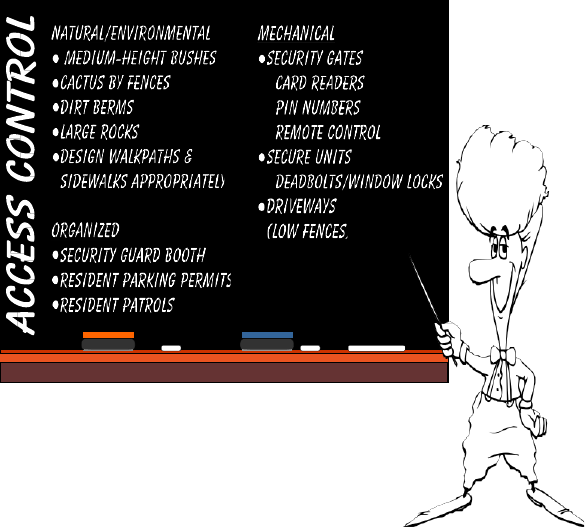
Workbook – 06-2012
16
San Diego Police Department Crime-free Multi-Housing Program
Mechanical Surveillance usually involves the purchase of moderately inexpensive mirrors to the
more expensive electronic devices, such as closed circuit television (CCTV). NOTE:
Maintenance of the devices must be considered when purchasing the equipment.
Organized Surveillance includes security patrols and other people who are organized to watch a
targeted area. While this is the most effective deterrent to crime, it is also the least cost effective.
While it may be necessary to employ security patrols, once the patrols are discontinued there is
generally nothing left to show for your investment.
Improve Access Control
Access Control is the second element in C.P.T.E.D. Because many criminals look for an easy
escape, limiting access into an area and back out again is a great way to deter criminal activity.
Access Control can be demonstrated by having one way into and out of a location, such as a security
post or the use of mechanical gates. Others who use “alternative” methods to enter an area look
suspicious, risk detection and sense an increased risk of apprehension.
It is important to assess how the intended users are entering the property. It is equally important to
assess how the non-intended users are entering the property as well. Look at perimeter fencing for
damage. Look for footprints in the dirt and gravel. Check for wear patterns in grassy areas.
Determining the weak points will be the first step to correcting the problem.
There are three types of Access Controls: Natural (or Environmental), Mechanical and Organized.
Natural/Environmental Access
Control involves the use of the
environment. To keep trespassers
from climbing over walls you
could plant a hearty cactus in the
area where it will be highly visible.
The use of dirt berms or large
rocks can also keep unwanted
visitors from entering onto private
property and vacant lots.
Mechanical Access Control
includes the use of security gates,
which have proven very effective at
reducing auto thefts, burglaries and
drive-by shootings. Most
perpetrators of these crimes do not
want to exit the way they entered as
it gives witnesses the opportunity to
record license plates and get better
suspect information.
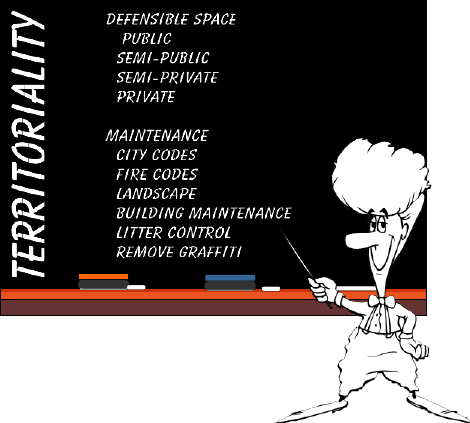
Workbook – 06-2012
17
San Diego Police Department Crime-free Multi-Housing Program
Organized Access Control entails the use of security or courtesy patrol to control who enters the
property. Distribution of parking permits affixed to registered vehicles will identify which vehicles
belong to the residents. Vehicles should not be allowed to back into parking spaces, to ensure
parking permits will be visible at all times.
Improve Territoriality
Territoriality is the third element in C.P.T.E.D. Territoriality is a psychological impression that
people get when they look at the property. If management displays good territoriality, it will
influence the community to respect the property as well. Good territoriality demonstrates a sense of
"ownership," alerting potential offenders that they don’t belong there and they will be seen and
reported, because undesirable behavior will not be tolerated. It has two (2) principle components:
Defensible Space and Maintenance.
Defensible Space is divided into four (4) categories: Public, Semi-public, Semi-private, and
Private.
1. Public areas are typically the least defensible. A car driving on a public street would not
automatically arouse suspicion.
2. Semi-public areas might include a cul-de-sac. If there are only five homes in the circle, a driver
would be expected to stop at one of the five homes or leave the area.
3. Semi-private areas might include sidewalks or common areas around residential areas. While
most people may not confront a stranger in a common area, they are likely to call the police if
the person does not appear to belong there.
4. Private areas are different in rental
communities than in single-family home
neighborhoods. In a typical apartment the
private area may not begin until you actually
enter into the unit. This is especially true if
several units share a common balcony or
stairways. In a single-family home
neighborhood, many owners consider their
front yard to be private, or defensible space.
There are many ways to establish defensible
space. By planting low growing hedges or bushes,
you will show a defined property line. By posting
signs such as “No Trespassing” or “No
Soliciting,” you have established the area as
defensible space.

INCREASING A RESIDENTS’
OWNERSHIP
&
CONTRO
L
OF
AN
AREA
WILL ENSURE A HIGHER
LIKELIHOO
D
OF
SUCCES
S
WITH
CRIME PREVENTION
PROGRAMS.
INCREASE DEFENSIBLE
SPACES
TO DECREASE
CRIMINAL
ACTIVITIES.
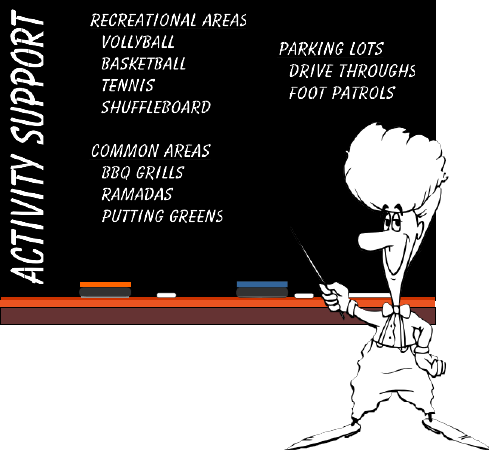
Workbook – 06-2012
19
San Diego Police Department Crime-free Multi-Housing Program
Maintenance is another key issue for Territoriality. If a rental property is well maintained, it
shows that management cares for and will defend the property against crime. A property that is
not well maintained may indicate that management is not concerned about the property, and might
overlook or ignore criminal activity. A property that is clean and well maintained is more likely to
attract legitimate users. A property that is not well maintained is more likely to attract deviant users.
If a property has several city code or fire code infractions, a property manager may lose the ability to
deal effectively with criminal activity. A person facing eviction may threaten to report the
infractions to the city if the manager proceeds with the eviction process.
Improve Activity Support
Activity Support is the fourth element in C.P.T.E.D. This involves the appropriate use of
recreational facilities and common areas. The objective is to fill the area with legitimate users so
the abusers will leave.
It may be difficult to believe that filling an area with legitimate users will cause the deviant users, or
abusers, to leave. But the opposite is also true. If you fill an area with deviant users, the legitimate
users will withdraw.
To promote Activity Support, utilize
common areas effectively. By incorporating
ramadas, picnic areas and other amenities
into open areas, the legitimate users will
maintain ownership of the property.
In recreational areas, utilize proper lighting
techniques and establish community rules to
encourage the proper and safe use of the
facilities. For laundry facilities, exercise and
game rooms, maintain visibility that is not
obscured for the intended users.
Troubleshooting
When you consider an area, ask yourself:
“Who are the intended users?”
“Why are they not using the area?”
“What will promote the use of the area?”
Also ask:
“Why are deviant users frequenting the area?”
“Why is it inviting?”
“What will discourage them?”

Workbook – 06-2012
20
San Diego Police Department Crime-free Multi-Housing Program
THE 3
“D”
CONCEPT OF C.P.T.E.D.
IS TERRITORY WELL DEFINED?
IS THE DESIGN GOOD FOR INTENDED PURPOSES?
IS THE AREA USED FOR DESIGNATED REASONS?

Workbook – 06-2012
21
San Diego Police Department Crime-free Multi-Housing Program
SOLVING CONFLICTS WITH C.P.T.E.D. CONCEPTS
SURVEILLANCE
ACCESS CONTROL
Concept:
Good lighting and good landscape
maintenance.
Conflict:
No formal or informal surveillance by
residents who stay indoors.
Solutions:
Organize Neighborhood Watch
Organize activities
Organize training
Organize alternative suggestions
Concept:
Good security fencing and gates.
Conflict:
Gates are propped open, locks
damaged and fences
damaged.
Solutions:
Educate residents
Repair/maintain gates
Repair/maintain fences
Send notice to residents
Evict problem residents
TERRITORIALITY
ACTIVITY SUPPORT
Concept:
Buildings well painted and addresses
clearly marked.
Rules posted appropriately.
Conflict:
Residents only have ownership or
concern for dwelling unit.
Lack of private/semi-private space.
Solutions:
Encourage gardening
Encourage play areas
Encourage ownership of areas
Encourage litter patrols
Concept:
BBQ grills and tables in common areas.
Sports and recreational facilities well
maintained.
Conflict:
Little to no use of facilities by
residents.
Area becomes a site for dangerous
activities and non-intended users.
Solutions:
"Market" amenities.
Organize events/contests
Prizes/plaques
Improve lighting

Workbook – 06-2012
22
San Diego Police Department Crime-free Multi-Housing Program
Lighting by itself does not prevent crime. Lighting provides the opportunity for "choice;" the
choice to walk forward because you can see clearly that the path is clear AND free of danger. If
the user can see a potential danger (person hiding, a gang of kids at the corner), they may choose to
walk a different way.
Lighting can illuminate a target as easily as it provides a legitimate user to see a potential threat or
criminal.
Lighting is a powerful tool the management and residents can use to control and reduce the
“far”
and opportunity of crime.
Unless you have formal or informal surveillance of an area, lighting may not always prevent
crime. In fact, good lighting without surveillance may actually encourage criminal activity in
some cases.

Workbook – 06-2012
San Diego Police Department Crime-free Multi-Housing Program
Goals of Lighting
UNIT LIGHTING SHOULD BE:
•
Energy efficient (used consistently)
•
Non-tamperable (use special screws)
•
Break Resistant Lens (Polycarbonate-Lexan)
BUILDING LIGHTING SHOULD:
•
Illuminate building numbers
•
Illuminate building accesses
•
Illuminate front and back areas
•
Illuminate porch lights under control of building, not
apartment user.
GROUNDS LIGHTING SHOULD:
•
Provide a cone of light downward to walkways
•
Provide a level of lighting between buildings to
distinguish forms and movement.
23
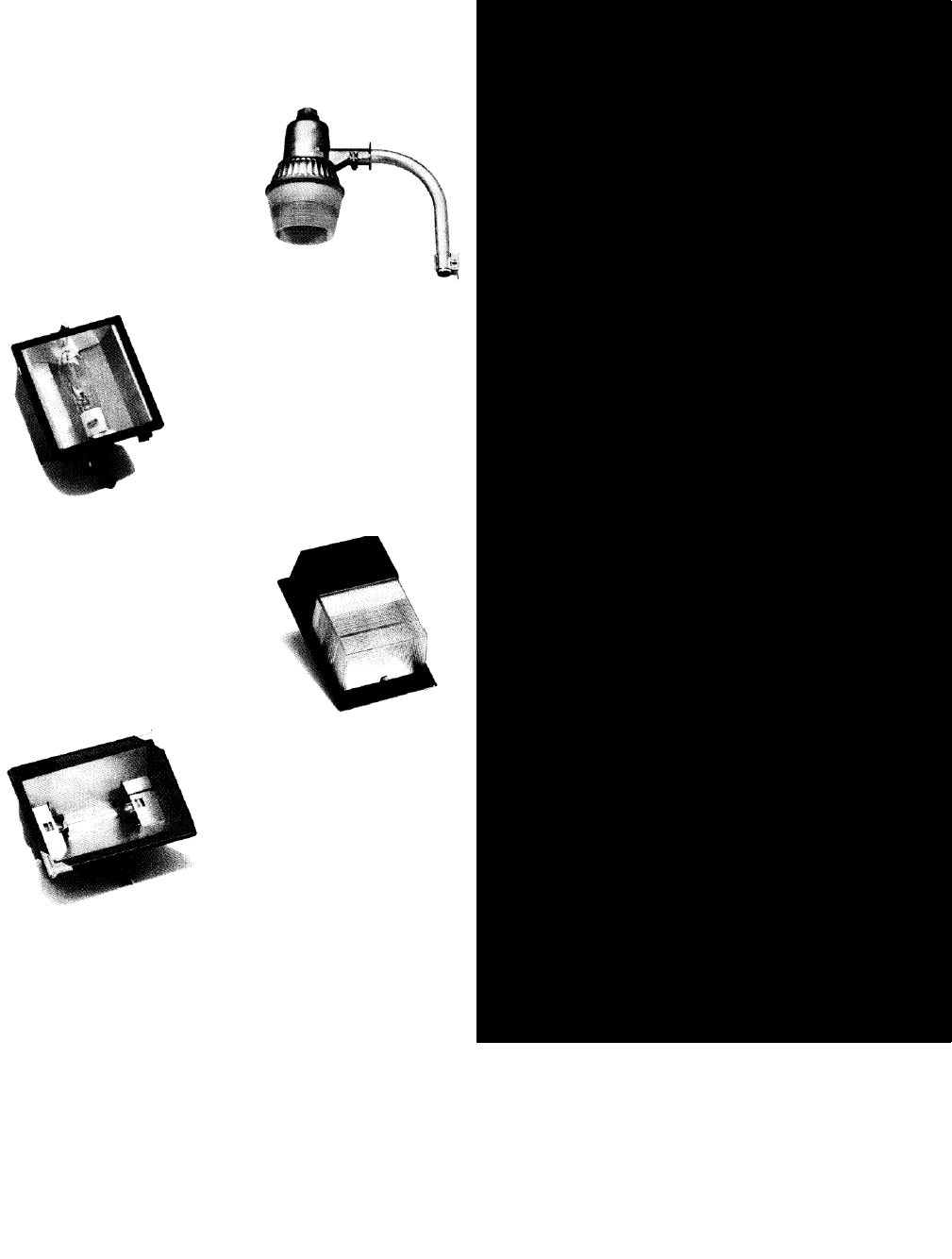
Workbook – 06-2012
San Diego Police Department Crime-free Multi-Housing Program
Types of Outdoor Lighting
Energy-efficient lighting fixtures help you cut your
electric bill. Plus, most products are easy to install
because many models come pre-wired and pre-
assembled. Each style comes with a lamp and you can
also choose to add a photocell on some designs.
Dusk-To-Dawn
High-Pressure Sodium
150 watt
High-Pressure
Sodium Flood
150
watt
High-Pressure
Sodium Wall Light
70 watt
Quartz Light Metal
Halide
500
watt
TYPES OF LAMPS
High Pressure Sodium, Metal Halide, Mercury Vapor
and Self-Ballasted Mercury Lamps are all high
intensity electric discharge lamps. Except for self-
ballasted lamps, auxiliary equipment such as ballasts
and starters must be provided for proper starting and
operation of each type, in accordance with American
National Standards Institute (ANSI) specifications.
Low Pressure Sodium lamps, although technically not
high intensity discharge lamps, are used in many
similar applications. As with HID lamps they require
auxiliary equipment for proper starting and operation.
These lamps, which have
efficacies
up to
200L/W,
have
a mixture of neon and argon gas plus sodium metal in
the arc tube and an evacuated outer bulb. When voltage
is applied to the lamp the arc discharge is through the
neon and argon gas. As the sodium metal in the arc tube
heats up and vaporizes, the
characteristic
yellow amber
color of sodium is achieved.
Nominal Wattage of Lamps
Lamp wattage varies during life, because of ballast and
lamp characteristics. Ballast data should be reviewed
for actual wattage levels.
Voltage Control
An interruption in the power supply or a sudden
voltage drop may extinguish the arc. Before the lamp
will relight, it must cool
sufficiently, reducing
the vapor
pressure to a point where the arc will restrike with
available voltage. Instant restrike lamps restrike
immediately with the resumption of power providing
approximately 5% of steady state lumens and a rapid
warm-up. Other lamps require approximately one
minute cooling before relighting. Still other HID types
take 3 to 20 minutes, depending on type of lamp and
luminaire.
24
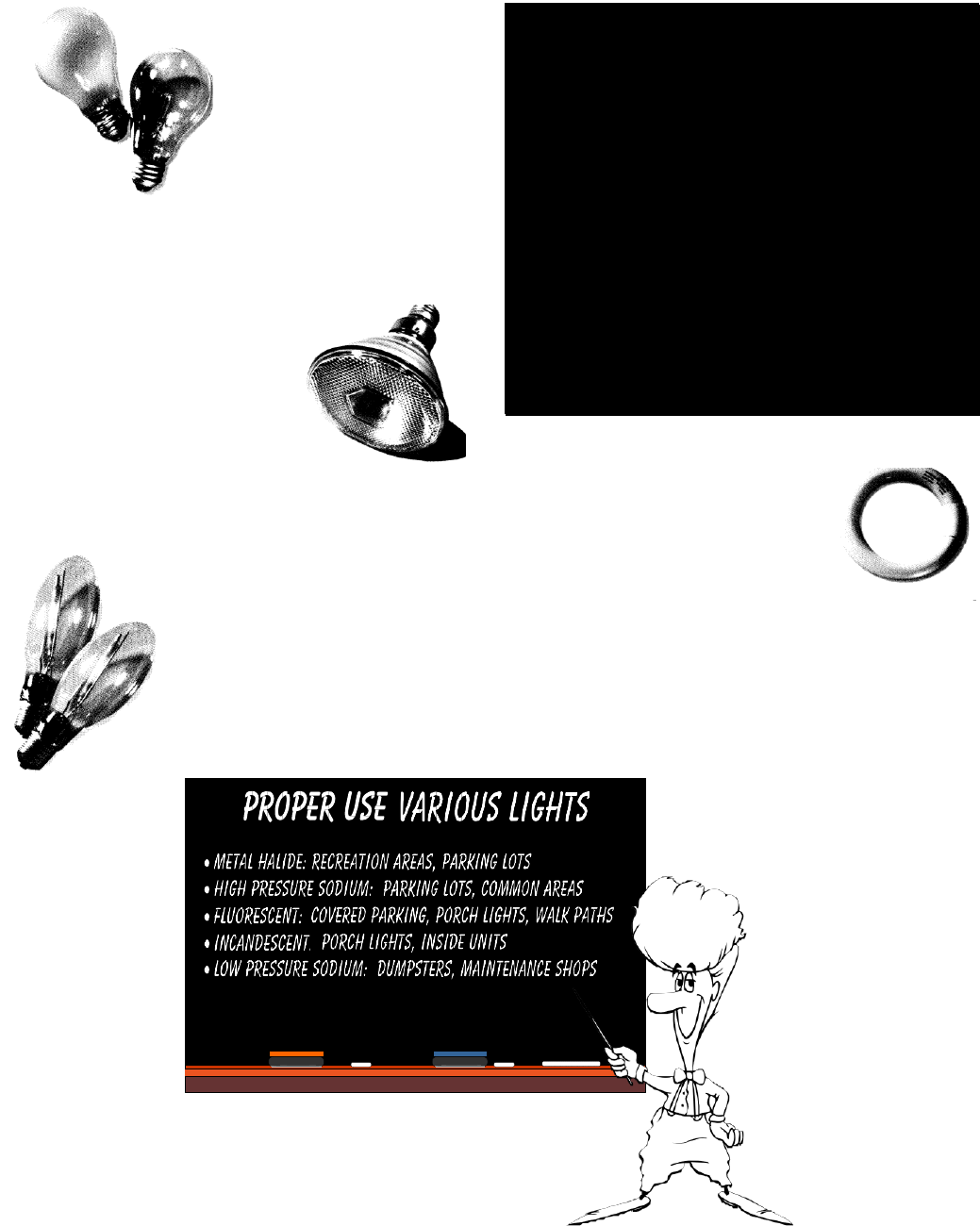
Workbook – 06-2012
25
San Diego Police Department Crime-free Multi-Housing Program
Incandescent Bulbs
Supreme incandescent
bulbs are rated to last 5000
hours compared to 750
hours for regular bulbs.
Cooler burn with 85%
longer lamp life.
Withstands voltage
fluctuations, and its brass
base offers reduced socket freezing. Frosted or
clear available. 40, 60, 100 watt varieties.
Flood Light
One-piece weatherproof con-
struction with a brass base to
reduce socket freezing. Cooler
burn.
High Pressure Sodium
Hermetically sealed, this high
pressure sodium lamp offers 24,000
hours of dependable life. Built for
outdoor uses, it absorbs wind and
vibration, is insulated against high
voltage pulses and has minimal
freezing or rusting in the socket.
Clear or coated. (For use in high
pressure sodium fixtures only.)
COLOR RENDERING
Another key performance characteristic, color
rendering, is the ability of a light source to represent
colors in objects. The relative measure of this ability is
color rendering index or CRI which rates lights sources
on a scale of 0 to 100.
The higher the CRI, the more vibrant or close to
natural the colors of objects appear. For
example,
a CRI
of 0 would come from a sources that provides light
without color, much like a black and white
television.
A
CRI of 100 would represent a source that has the
rendering
capabilities
of
incandescent
light (for sources
below 5000K) or ‘day light’ (for sources above 5000K).
CRI is
especially important
when
evaluating
fluorescent
and HID sources because they have a wide range of
CRIs.
Fluorescent Tubes
Cast cool, bright, economical light
indoors.
Pictured: Circular, one of the many
fluorescent tubes available.
26
San Diego Police Department Crime-free Multi-Housing Program
Workbook – 06-2012
Purposes of Security Lighting
Reduces crimes
Reduces trespassers
Reduces concealment
Increases security
Increases confidence
Increases territoriality
Increases surveillance
Lighting Terminology
Foot candle – equals light from one candle at one foot
away
Lux – European scale for foot candle
Lumen – quality of light from source
Watt – amount of energy consumed
Life – number of hours bulb will last
Three Types of Lighting
Incandescent
Fluorescent
High-intensity discharge
Workbook – 06-2012
San Diego Police Department Crime-free Multi-Housing Program
Incandescent
Low initial cost
High operating cost
Low efficiency
Short bulb life
Good color rendering
Fluorescent
Moderate initial cost
Moderate operating cost
Moderate efficiency
Moderate bulb life
Poor-to-good color rendering
(depends on phosphorous in tube)
High Intensity Discharge
(Metal Halide & High Pressure Sodium)
High initial cost
Low operating cost
High efficiency
Long bulb life
Good-to-excellent color rendering
Metal Halide: Excellent
High Pressure Sodium: Good
Low pressure sodium
Most efficient of all types
Poorest color rendering of all the types
27

Workbook – 06-2012
San Diego Police Department Crime-free Multi-Housing Program
Light and Lamp Comparison
While many lamps will offer varying degrees of efficiency and effectiveness, this is
a
general guide to discuss advantages and disadvantages with certain lamps. Contact
a
professional lighting consultant if you have any questions.
OPERATING
COST
HIGH
MODERATE
LOW
lncandeacent
Quara
Mercury
vapor
Fluo
.....
c:ent
Metel
Halide
High
PR1118URI
Sodium
Low
P1"81sura
Sodium
HIGH
MODERATE
LOW
FIXTURE
COST
Mera.ory
vapor
Low
Preaure
Sodium
High
Pressure
Sodium
Metel
Halide
28
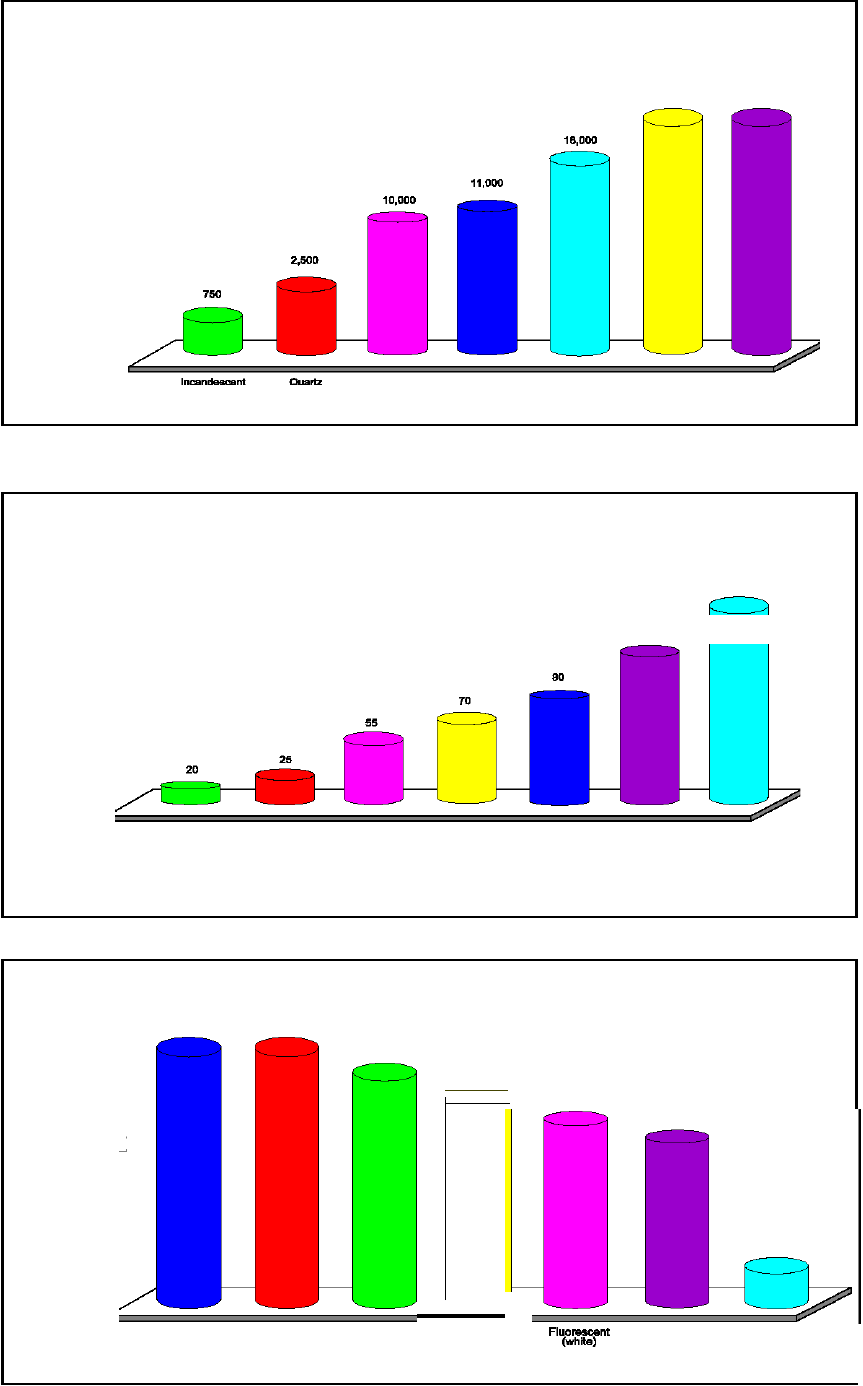
Workbook – 06-2012
29
San Diego Police Department Crime-free Multi-Housing Program
30,000
10,000
LIFE
EXPECTANCY
24,000
24,000
0
Fluore.cent
Metol
Halide
LDw
ure
Sodium
Men:ury
Vllpor
p..
H
..
i
.
g
..
h
,,..
Sodium
MOST LUMENS PER
WATT
(Similar to
miles-per-gallon)
175
100
120
175
50
0
lncancleacent
Quarlz
Fluoi'98C8nt
Mercury
Vllpor
Mabll
Halide
High
PreUure
Sodium
LDw
P1818Ure
SOdium
Results
may vary by lamp
type.
GOOD
MODERATE
LOW
COLOR
RENDERING
Malal Halide
(VERYwhlta)
Quartz
lncandaecent
(yellow lo
whl111)
Mercury
vapor
(bluiohwhlta)
High
Fftdure
Sodium
(Pink or light
gold)
Law
Praeeura
Sodium
(deep
yellow)
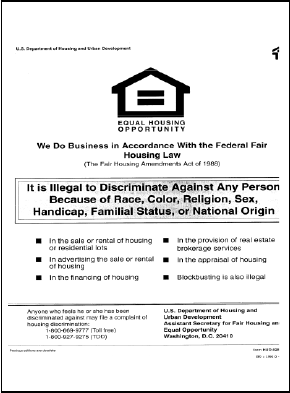
Workbook – 06-2012
30
San Diego Police Department Crime-free Multi-Housing Program
PART
FOUR
T
T
H
H
E
E
A
A
P
P
P
P
L
L
I
I
C
C
A
A
T
T
I
I
O
O
N
N
P
P
R
R
O
O
C
C
E
E
S
S
S
S
It’s Worth The Effort
Property managers have differing views on how, or if, they should screen prospective residents.
Some property managers have rigid guidelines established by their Management Company or
Owners. Other property managers may feel that calling references or checking prospective residents
is not worth the effort. Many times they rely on their “gut feelings” when it comes to approving
who they will rent to.
Good screening procedures will not only help you qualify better
applicants, it may prevent a discrimination case as well. Be
certain to keep current with new laws pertaining to Fair Housing
and consult with a qualified attorney before making changes to
your policies.
What Are Protected Classes?
Federal Fair Housing Laws strictly prohibit any discrimination
against protected classes. Those protected classes are:
Federal State of California
(Same
as
Federal
- Plus)
Race Ancestry
Color Marital Status
Religion Source of Income (legal and verifiable sources)
Sex Sexual Orientation
Disability Arbitrary Discrimination
National Origin - Age, Body Shape,
Clothing
or any other
characteristic
of the applicant
Familial Status
In some cases, property managers may have to comply with other protected classes which may
include age, sexual preference or source of income. What most people may not be aware of is that
EVERYONE is in a protected class. Everyone has a race, a color, a sex and a national origin.
No one can discriminate against an applicant based on their color, regardless of what color they are.
No one can be denied residency based on their national origin, regardless of where they were born.
NOTE: You should keep an “Equal Opportunity Housing” sign in the office to remind prospective
residents that you do not discriminate against the federally protected classes.
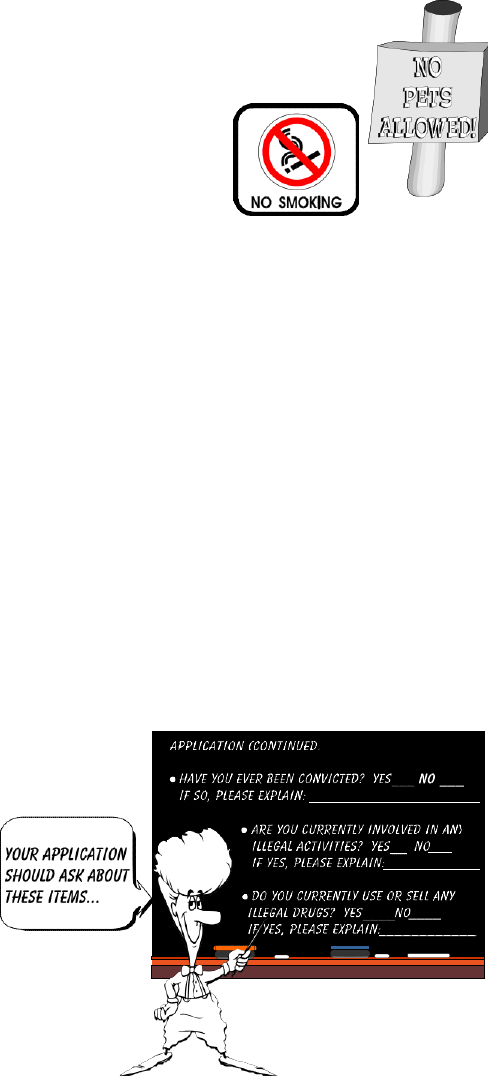
Workbook – 06-2012
31
San Diego Police Department Crime-free Multi-Housing Program
What About Non-protected Classes?
While discrimination against non-protected classes is not necessarily
illegal, it may not be profitable either. For example, a property
manager may discriminate against pet owners (provided that the
applicant is not dependent upon the animal for a particular disability),
but not allowing pets may turn away a large number of applicants.
Another example is the property manager who chooses to rent to only
non-smokers. Here again, it may be legal, but it may not be profitable.
Property managers should have written standards to address their application process. These
standards should be posted prominently and/or attached to each application. These standards should
also be carefully reviewed by an attorney or another individual familiar with Fair Housing Laws.
These standards should be readily available for review, and strictly adhered to. A single
discrimination judgment can result in a fine of $10,000.00 or more.
In any case, be sure to apply your screening criteria equally and fairly to all applicants. The basic
premise of these laws is to be certain property managers are screening fairly and staying consistent.
What About Criminal Behavior?
At this time it is not illegal to deny residency to an applicant based on their criminal history. Keep in
mind, it is not legal to discriminate on the basis of an arrest; it must be a conviction. If an applicant
says they were not convicted, but they made
a plea bargain instead, it is still a conviction.
Behavior is not one of the federally
protected classes. An applicant can be
denied residency for behaviors at previous
rental properties. For example, you could
refuse residency to an applicant who has
repeatedly disturbed or threatened previous
neighbors, sold or manufactured drugs, or
damaged properties they previously rented.

Workbook – 06-2012
32
San Diego Police Department Crime-free Multi-Housing Program
Disclosure
If an applicant discloses previous criminal history of convictions on the application, you must decide
whether or not to accept the application immediately. If you accept the application, you may lose
the right to deny the application for any information they have disclosed.
Bottom line: check each application thoroughly before accepting it or any processing fees.
Self Refusals
If an applicant is aware of the screening criteria, they are less likely to apply, knowing they will be
turned down. This is especially true if you charge an application fee or use a credit reporting agency
that thoroughly checks credit and criminal history.
Managers who stress strict adherence to screening policies will often see the applicant screen
themselves out of the process. There are many criteria you can use to encourage self screening.
The following is an example of what you could post.

Workbook – 06-2012
San Diego Police Department Crime-free Multi-Housing Program
(EXAMPLE
ONLY)
STATEMENT OF RENTAL
POLICY
THIS COMMUNITY WILL NOT DISCRIMINATE AGAINST ANY PERSON BASED ON RACE, COLOR,
RELIGION, SEX, NATIONAL ORIGIN, FAMILIAL STATUS, OR DISABILITY.
OCCUPANCY STANDARD: TWO (2) PERSON MAXIMUM OCCUPANCY PER BEDROOM
RENTAL APPLICATION EVALUATION GUIDELINES:
Age
Requirement:
Lease holder(s) must be 18 years or older. All occupants 18 years or older will be required to
complete an application (even if living with parent or guardian). Co-signers are not accepted.
Income
Requirement:
The gross monthly income of all lease holder(s) will be
considered
jointly and must equal
___times the rental amount on the apartment. All income must be
verifiable.
Employment Verification:
*Lease holder(s) must be currently
employed,
or provide written evidence of regular
income sufficient to at least times the rental amount on the apartment, for the lease term.
Self
Employment:
Must provide the previous year=s personal income tax return and the
previous
two (2) months
personal bank statements as evidence of sufficient income. Persons who hold jobs that are commission only, or
base salary plus commission, or tips, bonuses will be considered self employed.
Residency: Up to two (2) years residency history will be reviewed and must exhibit no derogatory references.
Any debt owed to a Concierge property must be paid before lease can be
approved.
Credit Requirements: The credit history will be reviewed and no more than % of the total accounts reported
can be over 60 days past due, or charged to collection in the past two years.
Pets: All pets are subject to property policy.
Application Fee: A $ non-refundable application fee is required per application.
Criminal History: Must exhibit no criminal
conviction
involving violence, gang
association,
firearms, burglary,
prostitution, illegal drugs, theft, vandalism, or any crime involving a minor.
This will include person(s) who have received deferred adjudication and/or have not yet satisfied the probationary
period of a deferred adjudication for any of the above mentioned offenses.
ADDENDUM TO THE APPLICATION:
Are you a current illegal abuser of a controlled substance? Have you ever been convicted of the illegal use,
manufacture, sale or distribution of a controlled substance? Are you currently on probation or parole for any of
the above-noted crimes?
I UNDERSTAND AND ACCEPT THESE QUALIFYING STANDARDS AND HAVE TRUTHFULLY
ANSWERED ALL QUESTIONS. FURTHER, I UNDERSTAND THAT FALSIFICATION OF RENTAL
APPLICATION INFORMATION WILL LEAD
TO
DENIAL
OF
RENTAL.
RENTAL POLICIES ARE
GUIDELINES, WHICH ENABLE US TO ACCEPT AS
PROSPECTIVE RESIDENTS THOSE
INDIVIDUALS WHO ARE CREDITWORTHY AND DO NOT
HAVE A
CRIMINAL BACKGROUND.
THIS
RENTAL POLICY DOES NOT INSURE THAT ALL
INDIVIDUALS RESIDING ON OR VISITING THE
PROPERTY CONFORM TO THESE GUIDELINES.
/ /
Prospective Resident Date Prospective Resident Date
/ /
Prospective Resident Date Agent For Owner Date

Workbook – 06-2012
San Diego Police Department Crime-free Multi-Housing Program
THE APPLICATION FORM
(EXAMPLE
ONLY)
PROPERTY:
APPLICATION
FOR
RESIDENCY
NAME SOCIAL SECURITY # _ _ _ _ _ _ _ _ _ _ _ _ _
DATE OF BIRTH PLACE OF BIRTH
SPOUSE’S NAME __________________________________________________________________________________________________
SOCIAL SECURITY # ________________________________________________________________
TOTAL NUMBER OF MINORS TO OCCUPY UNIT LIST AGES
CURRENT ADDRESS SINCE CITY STATE
ZIP PHONE LANDLORD’S NAME PHONE
PREVIOUS ADDRESS SINCE
CITY STATE ZIP HAVE YOU EVER BEEN
EVICTED OR HAD A UNLAWFUL DETAINER FILED AGAINST YOU? REASON
DRIVERS LICENSE # STATE EXP. DATE SPOUSE’S
DR.LIC. # STATE EXP. DATE VEHICLES - YOU OWN,
ARE BUYING, AND/OR WOULD BE PARKING ON THE PROPERTY:
MAKE MODEL YEAR COLOR LICENSE PLATE # EXP. DATE STATE
EMPLOYER’S NAME ADDRESS
CITY PHONE DATE STARTED
POSITION SUPERVISOR GROSS INCOME
PER
SECOND/FORMER EMPLOYER ADDRESS
CITY PHONE
EMPLOYED FROM TO POSITION GROSS
INCOME PER SUPERVISOR SPOUSE’S
EMPLOYER ADDRESS
CITY PHONE DATE STARTED
POSITION SUPERVISOR GROSS INCOME
PER
ANY ADDITIONAL INCOME - STATE SOURCE AND AMOUNT

Workbook – 06-2012
San Diego Police Department Crime-free Multi-Housing Program
Application for Residency - Page
2
NAME OF BANK BRANCH/ADDRESS TYPE OF ACCOUNT ACCOUNT NUMBER
CREDIT REFERENCES:
CREDITOR’S NAME TYPE OF ACCOUNT ACCOUNT NUMBER MONTHLY PMT. IN WHO=S NAME
TWO PERSONAL REFERENCES:
NAME ADDRESS
CITY
PHONE
RELATIONSHIP
Have you ever been convicted of a crime, placed on
probation/parole,
have any outstanding arrest or bench warrants, or are currently involved in any
criminal activity? Explain:
All information furnished on this application is to the best of my knowledge, complete and accurate. Discovery of false
or omitted information constitutes grounds for rejection of this application. You or any agent of your choice may verify
any and all information from whatever source you choose. I authorize all persons/or firms named in this application to
freely provide any requested information concerning me and hereby waive all right of action for any consequence
resulting from such information.
I acknowledge payment of $ as a non-refundable fee for the purpose of processing this
application.
Applicant Date
Co-Applicant Date

Workbook – 06-2012
36
San Diego Police Department Crime-free Multi-Housing Program
Verify the Information Given
It is a good idea to verify names and phone numbers with a phone book to be sure an applicant is
not using a friend or relative to “front” for them, posing as an employer or property manager.
Call previous managers to inquire about an applicant’s past behavior. This provides useful
information when considering whether or not to rent to the applicant. Many managers are instructed
not to give out specific information about previous residents, but they are certainly allowed to ask.
Don’t be afraid to ask if the resident has a history of non-payment or other non-compliant behavior.
You might be surprised what they will tell you.
It is a good idea to have a standard list of questions that will be asked for all applicants. These
questions should also be carefully reviewed and followed closely whenever checking references. It is
important to document the information received and names of references you contacted.
Be careful not to limit your questions only to the property manager who is currently renting to the
applicant. They may be inclined to say anything to turn over a problem resident. Try to find a
previous manager with no current interest in the applicant. They may be less inclined to
misrepresent the applicant’s previous behaviors and payment history.
To Owners & Managers With Small Properties:
It may take a little time, but you can learn a lot about an applicant by driving by their current address
to see how they are caring for the property where they currently live.
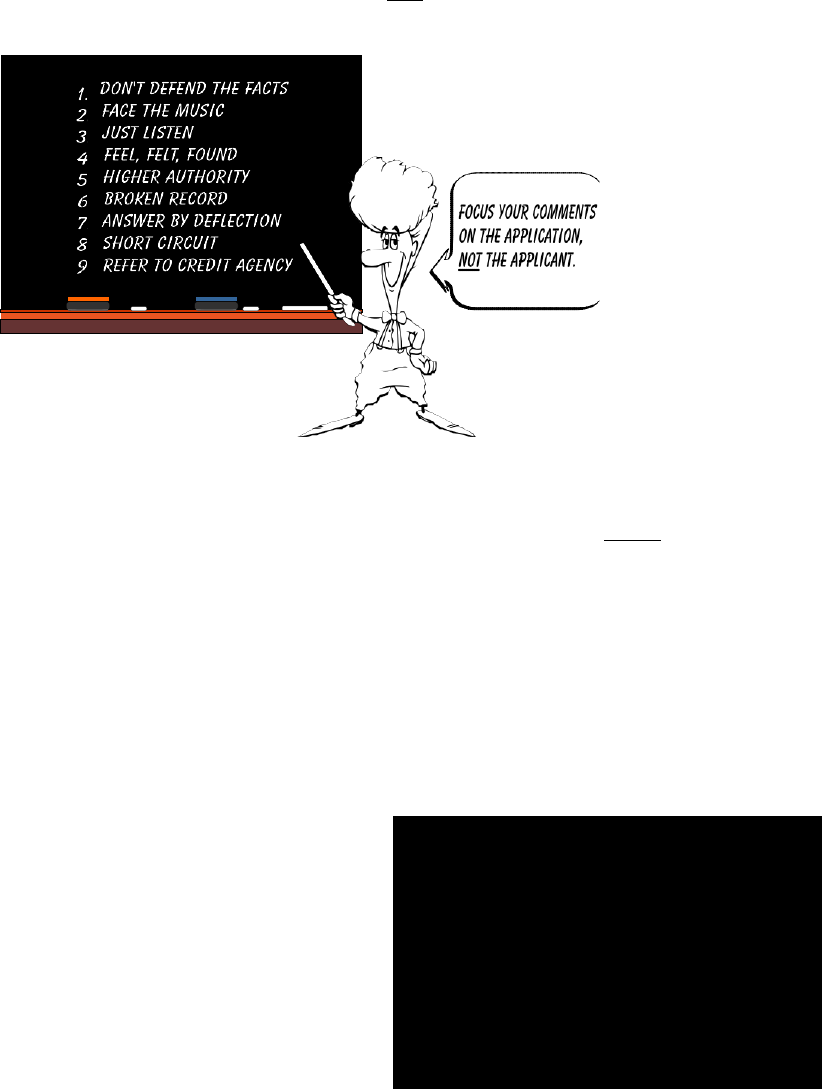
Workbook – 06-2012
37
San Diego Police Department Crime-free Multi-Housing Program
Refusing an Application
Try to resolve the applicant’s questions by using as few of these techniques as possible.
1. Don’t Defend The Facts
•
Don’t
defend the credit/criminal report
• You didn’t author it/You can’t change it
2. Face The Music
• Unresolved situation with previous manager
• Need to contact the reporting company
3. Just Listen
• Be polite
•
Don’t
volunteer too much information
4. Feel, Felt, Found
• I understand how you feel
• I would’ve felt the same way
• However, the information found doesn’t
meet our
criteria
5. Higher Authority
• A company policy
• Can’t go case by case (or discriminate)
6. Dumb Broken Record
• I can’t change it
• I understand how you feel
7. Answer By Deflection
• You need to talk to THEM
• I
can’t
fix this report
8. Short Circuit
• There’s nothing I can do right now
• Excuse me, I have another
appointment
9. Refer Applicant To Credit Agency
• If you improve the report I will
reconsider
BOTTOM LINE:
Plan your words very
carefully – discrimination
suits are filed when
managers say too much!

Workbook – 06-2012
38
San Diego Police Department Crime-free Multi-Housing Program
PART
FIVE
C
C
O
O
M
M
M
M
O
O
N
N
S
S
E
E
N
N
S
S
E
E
S
S
E
E
L
L
F
F
D
D
E
E
F
F
E
E
N
N
S
S
E
E
Awareness is the Key
Most crimes can be prevented if there is careful consideration given to measures proven to reduce
the likelihood of criminal activity. It is important to assess the types of crimes that have
occurred on the property, as well as crimes that have been committed on similar
properties. To discount the possibility of crime because “it has never happened
before” is not using good sense.
It is imperative to understand the potential for many crimes exists and that steps to
prevent those crimes should be taken before they occur. Many times, crime
prevention involves acute awareness of the surrounding area, and that doesn’t cost
a lot of money. Using a “buddy system” after hours is one inexpensive way to reduce
the likelihood of an attack.
Working After Dark
When working late, it is a good idea to have another person in the office or nearby. A person
walking to a car alone is much more likely to be attacked than a person who is walking with
somebody else. There is strength in numbers!
If a person must walk out to their car alone, it is a good idea to have the car as close to the
office as possible, reducing the walking distance. Whenever possible,
employees (especially employees who may leave after dark) should be
given assigned parking spaces closest to the office area, or be allowed to
move their vehicles closer before it gets dark.
If this is not possible, assign an area as close as possible which has excellent security lighting that
cannot be easily disabled. It is also essential, when trimming bushes or trees, to keep in mind the
casual observers who may live or be visiting in the general area. Keeping bushes and trees trimmed
and/or removing any objects that may block surveillance of the area or offer a hiding place for an
attacker will also allow the casual observer an open field of vision into the area.

Workbook – 06-2012
39
San Diego Police Department Crime-free Multi-Housing Program
Employee Training Programs
Employees should receive training to prepare themselves for all types of crime
situations. Typically, police departments will offer free classes that deal with
common sense self defense. There are also private firms that can take the training
one step further, even offering chemical sprays or other devices to discourage an
attack.
When working alone in an office an employee should be certain that
all doors and windows have been secured. It is a good practice to notify another
person when working late as well. There should be a telephone nearby, should they
need to call the police or another person for assistance.
Stay in Touch
Cellular telephones and two-way radios are another good way to stay in
touch, not only when someone is in the office, but when they have to step out
for a moment as well. Pagers are another good way to summon help from
maintenance people or grounds keepers. Many property managers have
established special codes that can be entered into digital pagers to quickly
identify problem situations that may occur.
Armed Robbery Prevention
Armed robbery is a serious concern not often recognized by property managers or leasing
staff. It is not uncommon for managers to collect thousands of dollars during the first part
of the month. Keep in mind, an armed robber will kill a convenience store clerk for
$50.00 in cash. Many property managers keep much more than this available in the form
of petty cash.
Earlier, we addressed Risk Management and the option of Risk Acceptance, or accepting
the risk. In this case, Risk Transference would involve transferring that risk by
purchasing a good safe with a special courier service.
Risk Spreading is a third option in risk management. This involves keeping money in different
locations, so even if one safe area is found, the money in other safe areas may go undetected.
Another way to spread the risk is to make frequent deposits with smaller amounts per deposit.
Risk Avoidance is a fourth option. Make a “No Cash Accepted” policy in the office. This can also
help to prevent internal theft and embezzlement, by avoiding a situation entirely.

Workbook – 06-2012
40
San Diego Police Department Crime-free Multi-Housing Program
At the very least, property managers should place signs in highly visible areas that say
the
management w
ill
not accept cash and no cash is kept on the premises. Recommended areas are
at
the
front door and at reception or desk
areas.
The potential for an armed robbery is not only in the office, but at the night drop as well,
and
everywhere in between. The potential for the money to be left behind, dropped or stolen
is
considerably high. The risk to employees who carry the money may be even
higher.
(See memo next page.
)
SET
POLICIES
TO
REDUCE
THE
POSSIBILITY
OF AN ATTACK.

Workbook – 06-2012
41
San Diego Police Department Crime-free Multi-Housing Program
C
RIME
F
REE
A
CRES
Apartment Community
TO: All Employees
FROM: Molly Manager
RE: Safety Policy
All applicants shall be required to show a California Driver’s License, California
Identification Card, or military photo identification card. This card shall be photocopied
and placed in a secure place while the applicant looks at the unit. The identification will be
returned immediately afterwards.
Property managers and agents shall require the applicant to complete a Guest Information
Card in the applicant’s own handwriting. This should include their current address and
phone number. (This policy should be posted as well.)
Property managers and agents shall notify another person about the showing before you go
and tell them what time you expect to return. If for whatever reason you feel in danger, do not
take any risks! Trust your instincts! Reschedule the showing for another time when you are
more comfortable.
When showing an apartment to a prospective resident, allow them to enter first. Position
yourself by the nearest exit. Leave the door open wide until you leave, but be aware for
suspicious people lurking outside the unit. NEVER follow the prospect into another room. If
you feel threatened, leave immediately and call for help.
Always keep vacant apartments or model units well secured. When entering vacant units by
yourself, lock the door behind you. It is a good idea to carry a radio or cellular phone with you.
If possible, have a staff member accompany you when you make your appointed rounds.
At the very least, agents should consider carrying a whistle, personal alarm or self-
defense spray, and know the hazards and limitations of whichever method they choose. Self-
defense classes may be another option to consider. Firearms are generally not a good option
for many people.
Report all suspicious activity to police and management immediately!
It is a good idea to have a written policy posted where all applicants will see it.
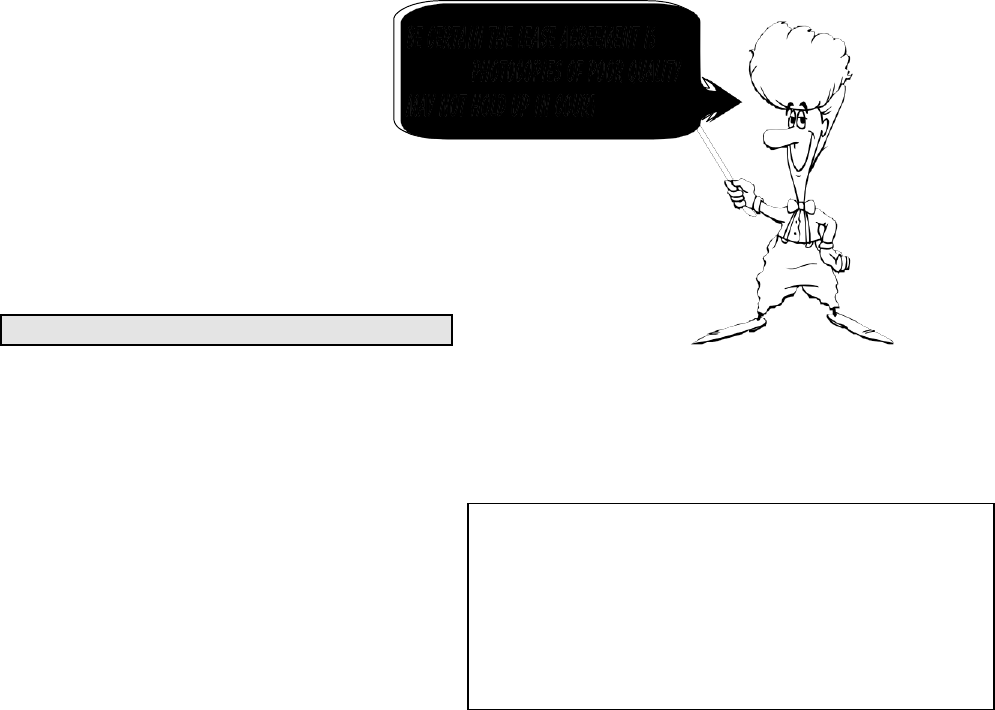
Workbook – 06-2012
42
San Diego Police Department Crime-free Multi-Housing Program
PART
SIX
C
C
O
O
M
M
M
M
U
U
N
N
I
I
T
T
Y
Y
R
R
U
U
L
L
E
E
S
S
A
A
N
N
D
D
L
L
E
E
A
A
S
S
E
E
A
A
G
G
R
R
E
E
E
E
M
M
E
E
N
N
T
T
S
S
Use a Current Lease Agreement
Many property managers are using rental agreements that are either outdated or in some cases
illegal. Rental agreements should frequently be reviewed by an attorney or a person very familiar
with landlord-tenant laws.
Frequently, State of California Landlord-Tenant laws will change, and a lease agreement may have
to be revised to keep up with those changes. Rental agreements that are outdated often do not hold
up in court.
ITEMS THAT MAY BE IN THE LEASE:
Cleaning/Redecorating Fees
Utilities Costs
Maintenance of the Premises
Pet Policies
No Business Clause
Key Control
Security Deposits
Alterations and Improvements
Use and Occupancy Restrictions
Rules and Regulations
Parking Restrictions
Cancellation Fees
Late or Partial Payment Fees
NOTE: Laws may vary considerably from state to
state. Make sure your rental agreement is
appropriate for current California laws. Always
consult with an attorney or somebody very familiar
with landlord/tenant laws before enacting new
lease agreements.

Workbook – 06-2012
43
San Diego Police Department Crime-free Multi-Housing Program
Use of the Crime-free Lease Addendum
The Crime-free Lease Addendum was developed to give reasonable notice to new residents (at
the
time they enter into the rental agreement) about activities or behaviors that contradict property rules,
regulations, lease agreements or state
statutes.
The Crime-free Lease Addendum should be applied equally and fairly to all residents of an
apartment community. The Crime-free Lease Addendum should be signed by all NEW residents. If a
rental agreement is involved rather than a lease, the Crime-free Addendum can be applied to both
new and existing tenants.

Workbook – 06-2012
San Diego Police Department Crime-free Multi-Housing Program
CRIME FREE LEASE
ADDENDUM
In consideration of the execution or renewal of a lease of the dwelling unit identified in the lease, Owner and Resident agree as
follows:
1. Resident, any members of the resident's household or a guest or other person under the resident's control agree to live a
“Crime Free Lifestyle” and shall not engage in criminal activity, including drug-related criminal activity, on or near the said
premises. "Drug-related criminal activity" means the illegal manufacture, sale, distribution, use, or possession with intent to
manufacture, sell, distribute, or use of a controlled substance (as defined in Section 102 of the Controlled Substance Act [21
U.S.C. 802]).
2. Resident, any member of the resident's household or a guest or other person under the resident's control shall not engage in
any act intended to facilitate criminal activity, including drug-related criminal activity, on or near the said premises.
3. Resident or members of the household will not permit the dwelling unit to be used for, or to facilitate criminal activity,
including drug-related criminal activity, regardless of whether the individual engaging in such activity is a member of the
household, or a guest.
4. Resident, any member of the resident's
household
or a guest, or another person under the
resident's
control shall not engage
in the unlawful
manufacturing,
selling, using, storing, keeping, or giving of a controlled substance as defined in Health & Safety
Code §11350, et seq., at any locations, whether on or near the dwelling unit premises or otherwise.
5. Resident, any member of the resident's household, or a guest or another person under the
resident's
control shall not engage
in any illegal activity, including: prostitution as defined in Penal Code §647(b); criminal street gang activity, as defined in Penal
Code §186.20 et seq.; assault and battery, as prohibited in Penal Code §240; burglary, as prohibited in Penal Code §459; the
unlawful use and discharge of firearms, as
prohibited
in Penal Code §245; sexual offenses, as
prohibited
in Penal Code §269 and
288, or any breach of the lease agreement that otherwise jeopardizes the health, safety and welfare of the landlord, his agent or
other tenant or involving imminent or actual serious property damage.
6. VIOLATION OF THE ABOVE PROVISIONS SHALL BE A MATERIAL AND
IRREPARABLE
VIOLATION
OF THE LEASE AND GOOD CAUSE FOR
IMMEDIATE TERMINATION
OF TENANCY. A single
violation
of any of
the provisions of this added addendum shall be deemed a serious violation and a material and irreparable non-compliance. It is
understood that a single violation shall be good cause for termination of the lease. Unless otherwise provided by law, proof of
violation shall not require criminal conviction, but shall be by a preponderance of the evidence.
7. In case of conflict between the provisions of this addendum and any other provisions of the lease, the provisions of the
addendum shall govern.
8. This LEASE ADDENDUM is incorporated into the lease executed or renewed this day between Owner and Resident.
Resident Signature
Date: _
Resident Signature
Date: _
Resident Signature
Date: _
Property Manager's Signature
Date: Property _

Workbook – 06-2012
45
San Diego Police Department Crime-free Multi-Housing Program
Communication is the Key
Be very certain to communicate your policy against subletting. The tenant
should NOT be allowed to sublet, transfer or assign a lease agreement, the
premises, or any part thereof without the management’s prior written
consent. If the management gives written consent to sublet, such consent
may include a provision that does not release the tenant from any liability.
Only persons listed on the lease, and the tenant’s temporary guest, shall be
allowed to occupy the premises or any part thereof, without the
management’s prior written consent. A temporary guest shall be construed
as someone who resides with the tenant for a short period of time (usually
no longer than 10-14 days).
Any type of drug activity or other illegal activity committed on or near the rental property will not
be tolerated, and management will take reasonable and appropriate action against residents who
violate the Crime-free Lease Addendum.
Residents are responsible for members of the resident’s household and guests (under their control)
when it comes to illegal or non-compliant behavior on the property. It is important to stress to new
residents that they should accompany their guests whenever possible to be certain they follow
community rules. Guests should not be allowed into recreational or common areas unless they are
with a resident of the property.
Residents, members of the resident’s household or a guest (under the
resident’s control), shall not disturb the other resident’s peaceful
enjoyment of the premises. If complaints are received, the management
should carefully document the information and serve the appropriate
notice. Even if the property manager did not witness the disturbance, notice
should still be served if the complainant is willing to testify in court. Let
the judge decide.
Inspection policies should be clearly stated. Typically, a move-in
inspection is conducted before the resident takes possession of the unit, and
other inspection is completed when the resident returns possession of the
unit back to the property management. In addition, property managers or maintenance should
conduct quarterly or bi-annual inspections of all units to be sure the property is not being abused and
all appliances are being maintained.

Workbook – 06-2012
46
San Diego Police Department Crime-free Multi-Housing Program
No Business Clause
Residents should not be permitted to conduct any business, legal or
otherwise, on the property. This causes a lot of foot traffic in and out of
rental units, visitors who park in “assigned” spaces, and excessive traffic
in the parking lots. This business may also be a “front” for illegal activity.
If management desires to allow enterprising, the manager should approve
each request and keep an agreement in the resident’s file.
Resident will agree to:
limited hours
limited noise
limited foot traffic
take responsibility for all visitors
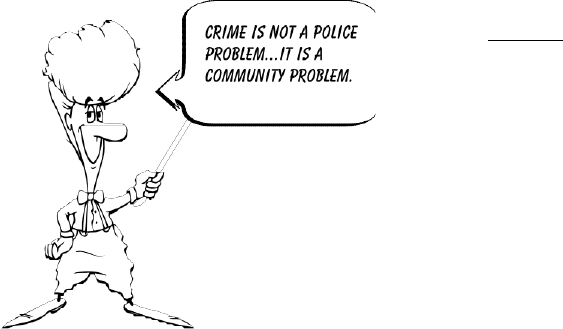
Workbook – 06-2012
47
San Diego Police Department Crime-free Multi-Housing Program
PART
SEVEN
B
B
U
U
I
I
L
L
D
D
I
I
N
N
G
G
A
A
P
P
A
A
R
R
T
T
M
M
E
E
N
N
T
T
C
C
O
O
M
M
M
M
U
U
N
N
I
I
T
T
I
I
E
E
S
S
Not a Complex
Rental properties are not complexes. Complexes are disorders! Rental properties are small
communities where people live, and many raise a family.
It is important to view each property as a community within a community. Residents need to feel
they are a vital part of a healthy community. When residents feel at home, they are more apt to take
pride and ownership of the area.
If residents of a rental property are fearful or not familiar with others in that community, many
problems can result. Residents will be less likely to report suspicious or illegal activity, and that
causes apathy.
When apathy pervades, soon drug dealers and other undesirables will begin to take over the area.
The only thing necessary for these activities to flourish is for good residents to do nothing to stop it.
It does not take long for those who perpetrate illegal activity to realize no one is going to report
them.
Not a Police Problem
Crime is NOT a police problem. It is a COMMUNITY
problem. The police are a part of the community, so this
does not exclude the police. It certainly is the police
department's role to arrest people involved in illegal
activity, but if the management re-rents to others
committing criminal acts, the problem does not go away.
For example, if neighbors complain that various types of
illegal activity are making a park unsafe for children to
play, this is not necessarily a police problem. The police
can remove the persons committing crimes in the park,
but if the residents do not follow-up by using the park,
other illegal activities will soon begin again.
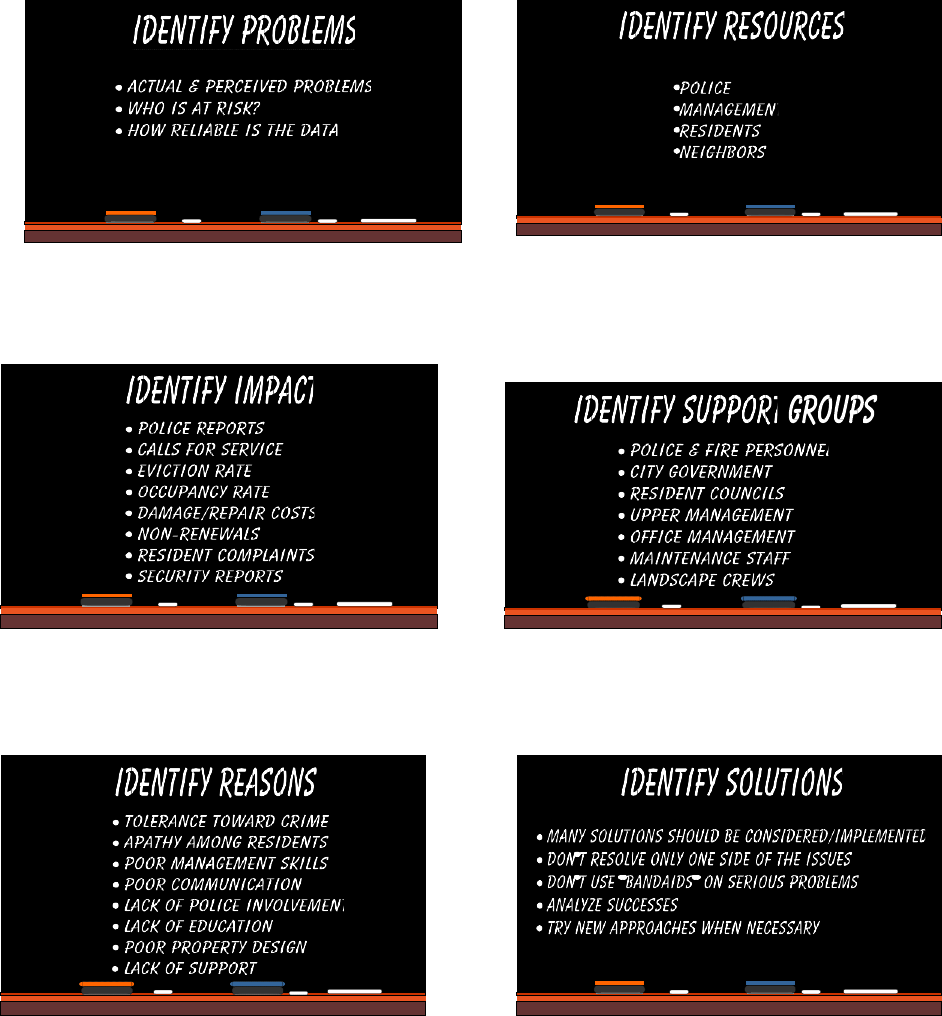
Workbook – 06-2012
48
San Diego Police Department Crime-free Multi-Housing Program
PROBLEM
SOLVING
1 2
3 4
5 6

Workbook – 06-2012
49
San Diego Police Department Crime-free Multi-Housing Program
How to Begin
To build an apartment community you need to start with residents that
care about their environment. Frequently property managers will say that
residents are aware of illegal activity occurring on the property, but they are
unwilling to give their names or make a written report.
In strong apartment communities, residents will not tolerate illegal activity, and are even willing to
testify in court about abhorrent behavior among other residents. Remember that criminals are like
predators, seeking the easy target. If they are able to scare residents into silence, they can perpetrate
the crimes.
As previously stated, one of the most violent elements in society today is apathy. Ignoring a crime
problem will allow it to flourish more rapidly. It works the same way as weeds. Ignoring a problem
will not make it go away. Usually it will get worse.
Residents need to understand that they are a vital part of the community's health and well-
being. The San Diego Crime-free Multi-housing Program teaches residents how to be effective
eyes and ears of the community.
To attract conscientious residents, you must have a clean
property. Properties that have fallen into disrepair will not
attract responsible residents. A property that is clean and
well maintained will. It begins with curb appeal; how your
property looks.
Form versus Function
While a small sports car may be very attractive, it does not offer much protection in an accident. The
1955 sedan that weighs twice as much (or more) will offer better protection. The point is it does not
matter how pretty something is. If it is not safe, it is not practical.
Property management will spend tens of thousands of dollars to beautify a property, but they will not
invest in security lighting. A person looking for a safe place to live may shy away from a property
that is too dark, however, a drug criminal may choose a property for that very reason.
Attracting good residents is the first step to building an apartment community. You need to begin by
cleaning house...literally. It does not cost a lot of money to pick up litter or other garbage and
broken glass. Trimming trees and bushes does not have to be expensive either. Responsible
applicants will come if they feel responsible management is running the property.

Workbook – 06-2012
50
San Diego Police Department Crime-free Multi-Housing Program
It is difficult to attract good residents if you have current
residents loitering in the parking lots or common areas
drinking alcohol or using drugs. People who conduct this
kind of behavior will not only prevent good residents
from moving in; they will influence your best residents
not to renew their lease.
You cannot build an apartment community if you do not
remove all of the obstacles that stand in your way. It is a
good idea to visit the property at all times of the day and
night to see how the residents behave. This is especially
important for properties with off-site management or
absentee landlords. Do not rely on independent
management companies that contract their services. Many
times they are chiefly concerned only with collecting the
rent.
The Next Step
Once you have attracted the right applicants, be sure to sell them on the benefits of your particular
property. It is a great idea to highlight the best features of the property. But keep in mind many
properties have great amenities. You need to appeal to their concerns about safety and security.
While no property manager can guarantee a resident will not be affected by crime, a resident will
take great comfort in knowing the property has established a good rapport with the local police.
Good prospects will be happy to hear management is a member of the San Diego Crime-free
Multi-housing program. Prospects with a history of drug or other illegal activity may simply
say, “Thank you, there is one other place I want to look at first.”
Be fair, but be firm in your residency requirements. It is your right. One property manager notorious
for her strict guidelines was reported to the Attorney General's office for possible discrimination.
People from various classes were sent to the property to audit the manager. The report concluded the
manager was equally rude to everyone; there was no discrimination, she was just very strict.
Once a resident shows interest in the property, let them know that all residents at the property have
been required to sign the Crime-free Lease Addendum and pass a criminal background check. While
this is no guarantee, it does show that management is doing everything they can legally do to reduce
the likelihood of criminal activity on the property.
Closing the Deal
Once an applicant has been approved for residency, they will come into the office to review
community rules and sign the rental agreements. This is a good time to explain management and
resident responsibilities.
Property managers should reiterate their responsibilities, and the responsibilities of the residents.
This is a great way to establish a professional, yet personal, rapport with the new residents.

Workbook – 06-2012
51
San Diego Police Department Crime-free Multi-Housing Program
Keep it Going
It is a great idea to sponsor community activities at least
quarterly. These activities should appeal to all age groups.
Try to plan various activities that are sure to draw as
many residents as possible. When residents withdraw into
their units and do not socialize with neighbors, this leads
to apathy and sometimes hostility among residents.
When residents feel they are a part of a community, they
are more likely to work out differences with neighbors.
Residents who do not associate with neighbors are much
more likely to make complaints to management. People
who use rental properties to promote illegal activity prefer
to live in properties where residents keep to themselves,
and community activities are less frequent.
To attract younger residents it may be necessary to invite
a band, disc jockey, or sponsor a night of karaoke. This is likely to draw a lot of residents, especially
if you have free food, beverages and giveaways to raffle off. By having functions that include all
ages, residents begin to put names with faces, and faces with unit numbers. Younger residents will
be less likely to cause problems in an area where they are well known.

Workbook – 06-2012
52
San Diego Police Department Crime-free Multi-Housing Program
PART
EIGHT
A
A
C
C
T
T
I
I
V
V
E
E
P
P
R
R
O
O
P
P
E
E
R
R
T
T
Y
Y
M
M
A
A
N
N
A
A
G
G
E
E
M
M
E
E
N
N
T
T
Taking a Complaint
An apartment community needs active management to deal with the daily problems that can arise
among residents and guests. A manager should always be fair and impartial when hearing about
resident complaints. It is good management to hear both sides of the story whenever possible.
Calling both residents into the office may be one way of resolving small problems between
residents.
In cases where there is a potential for violence, it may be necessary to call the police, or at the very
least try to keep the residents apart. If the complaint amounts to a breach of the rental agreement or
the Crime-free Lease Addendum, and one or several residents are willing to write a complaint and
testify in court, you may want to serve the notice even though you were not an eyewitness to the
event. Let the judge decide.
When property managers show a genuine interest in the residents’
concerns, it encourages the residents to take ownership of the
community. If residents feel their concerns will fall on deaf ears, they
will stop bringing issues to management. This is not a good thing, as
small problems will progress to larger ones, and those problems can
lead to catastrophes.
Routine Property Inspections
Pursuant to Civil Code §1954, the landlord must serve a 24-hour notice to gain access to the
property. If a manager or agent of the property enters the unit without legal notice, the resident may
be entitled to monetary damages.
In some larger properties it may not be possible to inspect every unit on a quarterly or semi-annual
basis, but for smaller rental properties it could be a valuable use of time. Routine property
inspections should be conducted for all residents equally and fairly.
Routine inspections may be conducted for the purpose of replacing air conditioning filters or
inspecting a property for damage, when reasonable grounds exist that a problem has occurred (such
as roach infestation or water damage).
Inspections should never be conducted for the purpose of singling out a particular resident without
cause. It should never be done for personal reasons or for retaliation on the part of the management.

Workbook – 06-2012
53
San Diego Police Department Crime-free Multi-Housing Program
If residents refuse to allow the manager or an agent to
inspect the unit or any part of the unit, the manager may
serve a three-day notice for non-compliance. Residents
cannot install interior dead bolts or refuse an inspection
of a part of the unit. If a resident does refuse access, such
refusal is sufficient grounds for eviction.
In an emergency situation, such as fire or water damage,
a manager may enter the unit without serving notice to
protect the property from excessive damage. If the
manager has reason to believe a resident may be injured
or ill, they may enter the unit to check the welfare of the
resident if other attempts do not work.
GOOD PROPERTY MAINTENANCE
Building
Maintenance
- The building should have a bright colored paint to reflect ambient
light. Keep it looking cared for.
Stairs/Balconies - Stairs & balconies should not have a cluttered appearance. They should
appear clean and safe.
Courtyards - Keep trees and bushes trimmed. Maintain good lighting and litter control.
Common Areas - Laundry and recreational areas should be clean, well lit and promote a
sense of safety.
Parking Lots - Maintain lighting, asphalt and signage. Paint speed bumps and fire lanes as
necessary.
Perimeter Fencing - Inspect for damage to structures and repair immediately.
Graffiti – Report graffiti the San Diego Police Department’s on-line Graffiti Control
Sighting/Complaint Form. Call the Graffiti Hotline at 619-525-8522. Then paint over ASAP.
Litter Control - All members of the management team should pick up litter or debris
whenever they see it. Encourage residents to help keep “their community” clean.
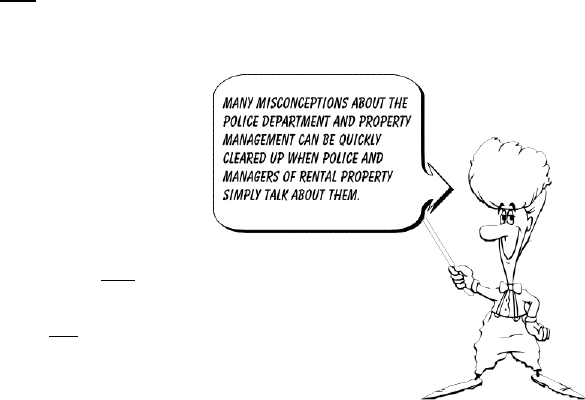
Workbook – 06-2012
54
San Diego Police Department Crime-free Multi-Housing Program
PART
NINE
C
C
O
O
M
M
B
B
A
A
T
T
I
I
N
N
G
G
I
I
L
L
L
L
E
E
G
G
A
A
L
L
A
A
C
C
T
T
I
I
V
V
I
I
T
T
Y
Y
Whose Job Is It?
Property managers get frustrated very quickly when trying to report criminal activity to the police. It
just seems the police do not show enough interest. If they cared, they would arrest the
troublemakers, right? Well, it is not that easy.
Some property managers are viewed as apathetic toward
crime. It appears that property managers intentionally rent
to anyone, as long as they pay the rent. Some police
officers are viewed as apathetic toward problems that
arise in rental communities. It appears the police are in
too much of a hurry to get to the next call, or the next cup
of coffee.
The truth is, there are some property managers and police
officers that could do a better job. But the majority of
police officers and property managers are doing their
level best. There is just the issue of misconceptions about
what the police can and cannot do, as well as what the
property manager can and cannot do.
The Displacement Theory
If management depends too heavily upon the police to deal with criminal activity on the property,
they will likely be disappointed. The police cannot do very much alone.
For example, consider the balloon displacement theory. If a balloon is squeezed from one side, all of
the air is displaced to the other side. When the balloon is released, all of the air comes back again.
The police have this same effect on crime. The police can respond to a crime problem, apply
pressure, and displace the problem. But as soon as they move on to the next area, and they WILL
have to, the problem returns.
If a property manager squeezes one side of a balloon, maintenance squeezes another side, the police
another side, and residents squeeze from the top and bottom, the balloon will burst. This team can
have the same effect on crime. There is strength in numbers! United against crime, the team will
always win.
Police officers do not have sufficient training in civil laws regarding landlord/tenant disputes.

Workbook – 06-2012
55
San Diego Police Department Crime-free Multi-Housing Program
Frequently, the police expect the property management to do things
that just are not allowed. The reverse is true. Many times the police
are asked to do things that they are not allowed to do either. Because
there is not enough time spent on explaining why a particular action
cannot be taken, the other sees this refusal as apathy.
Civil Laws versus Criminal Laws
To clear up the matter, we first have to see the differences between civil and criminal matters. They
have very little in common. In fact, sometimes they have NOTHING AT ALL in common. Property
managers work with the Landlord/Tenant law of the California Civil Code (civil laws) while the
police work with the California Penal and Health and Safety Codes (criminal laws). The rules and
the penalties are entirely different.
Criminal Law
When you think of criminal laws, think of Perry Mason, the judge and jury. When you think of civil
laws, think of Judge Wapner and “The People’s Court.” The issues and the procedures are quite
different.
In criminal law, the police must have ‘probable cause’ to arrest someone. Suspicion is not
enough. Probable cause is where an officer knows a crime happened and believes the perpetrator is
the one being detained. When an officer begins to question the person who just got arrested, they
must tell the suspect about their “Miranda Rights.” The police cannot search an apartment
without a warrant, and they are not easy to obtain.
If the officer is able to build enough evidence to arrest a suspect, there is still no guarantee the
prosecutor's office will file charges. If charges are filed, there is no guarantee the person will be
brought to a jury trial. If the person is brought to a jury trial, there is no guarantee the jury will
convict. If the jury convicts, there is no guarantee the person will go to prison. If the person goes to
prison, there is no guarantee they will stay there very long.
In many cases, plea bargains are made, probation is given, and in some situations, the charges are
just dropped. In most cases, the people that get arrested at rental properties do not go to prison. They
are released very soon after being arrested, and they go right back home to their apartment.
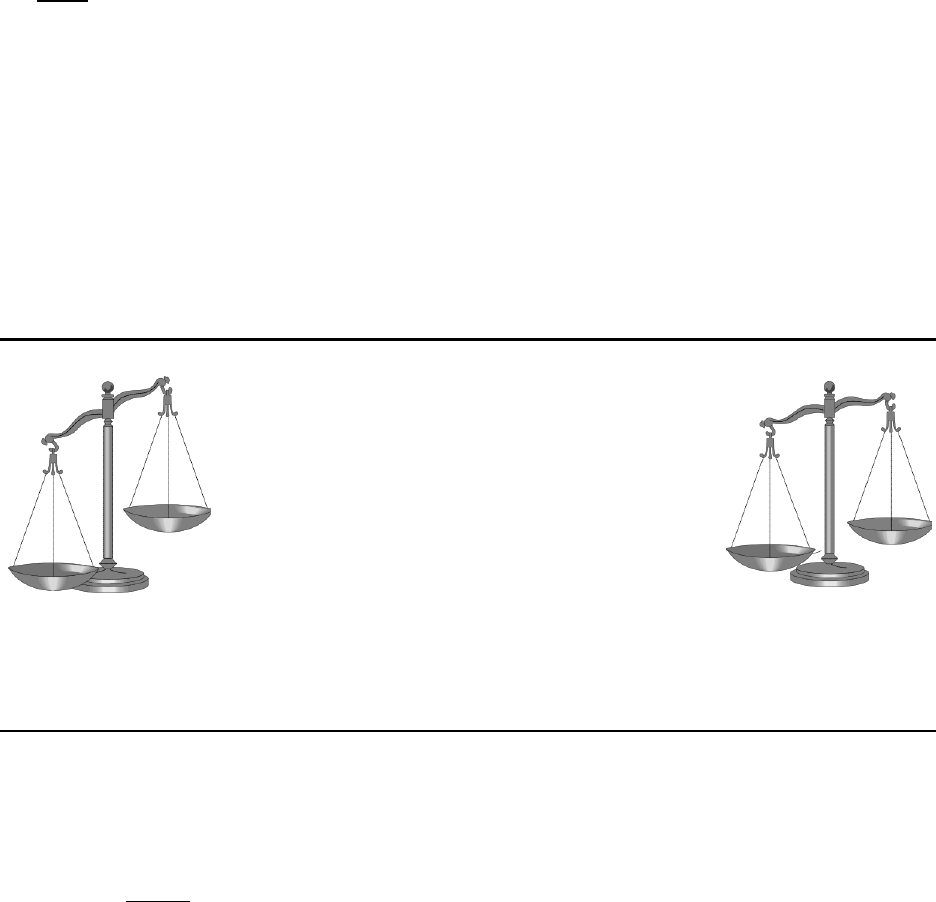
Workbook – 06-2012
56
San Diego Police Department Crime-free Multi-Housing Program
Civil Law
In civil law, the procedure is much different. Property managers do not need probable cause to
question a resident and they do not have to read them their rights. Property managers have
the right to enter rental units (as provided by law), and they do not need a search warrant! If
the resident has committed a breach of the rental agreement, the resident must appear in court or risk
losing the judgment.
In civil court this is not the typical courtroom scenario. You might be surprised not to see a jury.
Each person stands before a judge, the judge weighs out both sides of the issue based on the
evidence presented, and renders judgment. That is it.
In criminal cases, a jury must be convinced “beyond a reasonable doubt.” In civil law, the judge only
needs to see a “preponderance of evidence.” A preponderance of evidence is MUCH less than proof
beyond reasonable doubt. A preponderance of evidence could be only 51% to win. Proof beyond
reasonable doubt requires virtually 100% to win the case.
VS.
Criminal
Preponderance
98%-100%
Civil
Preponderance
51+%
Taking Action
If a resident is conducting illegal activity at the rental property, a criminal conviction may not be as
expedient as taking civil action. For instance, if a resident is suspected of selling drugs or gang
activity, you should contact the police, but be prepared to take action yourself. There may not be a
whole lot the police can do to help you in some cases. Document all of the activities you and others
have observed, because you may have more ability to deal with the situation.

Workbook – 06-2012
57
San Diego Police Department Crime-free Multi-Housing Program
Possession of Firearms
The San Diego Police Department frequently receives calls from property
managers and other concerned residents about a person on the property with
a gun.
As long as the person is not pointing the gun at anyone, posing a threat,
carrying the gun loaded, or concealing it without a permit, the person is
probably not breaking California law. It is not against the law for a
person to carry a gun, as long the gun (or the holster) is visible and is not
loaded. If it is concealed, they must possess a permit for the weapon issued
by the San Diego County Sheriff’s Department.
Criminal laws against threatening a resident or another person require a considerable amount of
proof. Civil laws regarding residents of rental property include intimidation, which is a lot easier to
prove. In this case, the management may have more authority to deal with gun-toting residents
than the police.
Although property managers have tried to make rules prohibiting residents from carrying guns on
the property, they may be ruled as conflicting with the constitutional right to bear arms (in violation
of the Second Amendment). However, rules regarding behaviors associated with firearms are more
enforceable.
Gang Membership
It is not against the law to be in a gang. However, it is against the
law to actively participate in any ‘criminal street gang’ with knowledge
that its members engage in or have engaged in a pattern of criminal
gang activity. The term "criminal street gang" means any ongoing
organization, association, or group of three or more persons, whether
formal or informal, having as one of its primary activities the
commission of assault with a deadly weapon, robbery, homicide or
manslaughter, drug activity including sale, possession, transportation,
manufacture, or offer for sale, rape, kidnapping, carjacking, and other
crimes. See Penal Code § 186.20 et seq.
If a gang member commits a criminal act on the property, spray
painting, for example, now the police can get involved. But if the
suspect is a juvenile, do not be surprised if they are immediately
released to a parent.
If neighboring residents complain the suspected gang member’s friends are disturbing their peaceful
enjoyment of the premises, you may be able to serve a three-day notice. This would apply to loud
music, loud parties, verbal fights or other breaches of the rental agreement.

Workbook – 06-2012
58
San Diego Police Department Crime-free Multi-Housing Program
Drug Paraphernalia
Anytime a manager finds a drug pipe, drugs, needles or other paraphernalia on the property, they can
take the items to the office and then call the police department to have the items removed. It is
important to exercise caution when handling these items, and
gloves should be worn.
Needles are especially dangerous, not only because of the drugs
themselves, but because of the likelihood of the transmission of
Hepatitis or the HIV virus. Because children and adults
frequently crawl into dumpsters, this is not a good place to dispose
of them. Maintenance and grounds keepers should also be on the
lookout for needles and other stashes in remote areas of the
property and inside broken sections of block fences.
General Disturbances
Loud music, loud parties and just rowdy behavior can be very annoying.
Under California law, the police can ask residents to reduce the noise, and
may issue citations and arrest individuals for disturbing the peace. See
Penal Code section § 415 or San Diego Municipal Code Chapter 51.1, the
City of San Diego can bill the responsible parties for the cost of police
manpower in responding to the loud party. However, as a practical
matter, the management has the most power to deal with this non-
compliance. A resident should be served with a three-day notice for each
breach of the rental agreement. The manager can simply tell the resident to
stop violating the rental agreement, or the next time the violation happens will be grounds for an
eviction.
It is okay to call the police when there are disturbances on the property. But be prepared to serve the
appropriate notices as well. In cases of disturbances, an officer might issue a citation to the resident,
but they are not likely to go to jail. Even if the police officer did arrest the resident, and found a
marijuana cigarette in his pocket, chances are very good the resident will be released or will be back
home the very next day, if not that night.
Who Has the Power?
The Fourth Amendment to the United States Constitution limits the power of the police. The
property manager has much more power to remove a resident from the property, since there is
a contractual arrangement.
There are some things the police can do that managers cannot, however, more often what the
management can do, the police cannot. Together the police and management can work with
responsible residents to solve virtually any problems. It takes a concerted effort, and both sides
have to be willing to do as much as possible.
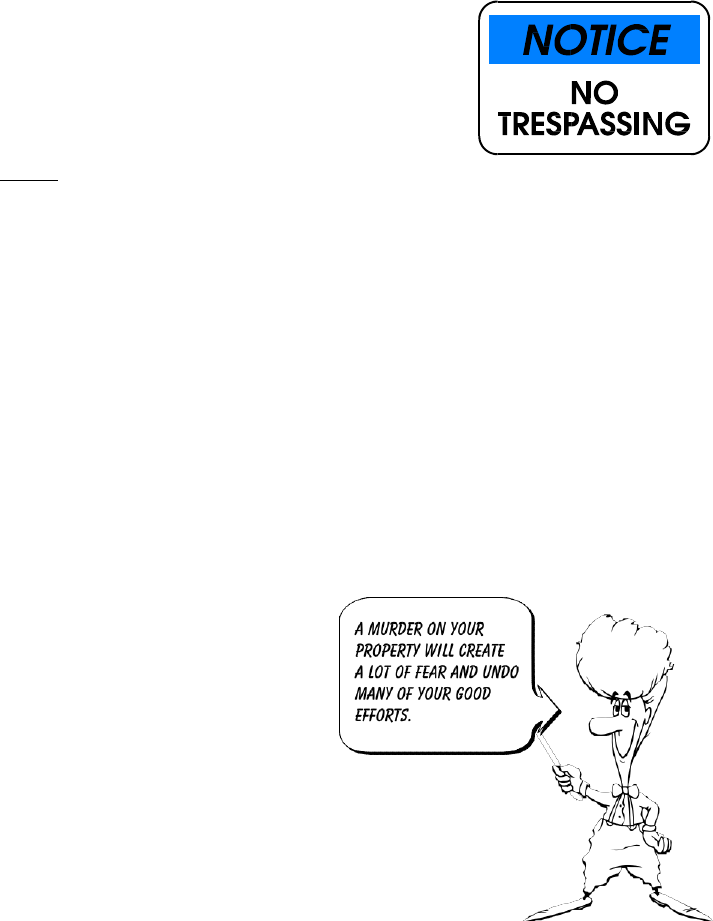
Workbook – 06-2012
59
San Diego Police Department Crime-free Multi-Housing Program
Trespassing
If a rental agreement has clearly stated policies regarding unauthorized
occupants, the property manager can typically serve a notice for the
resident to remedy the breach in three days, or face eviction. This is often
the case with unauthorized pets.
While this story may sound farfetched, truth is sometimes stranger
than fiction. This is an actual case.
Attempted Murder
“9-1-1, what is your emergency?”
“It’s my husband, he has a gun, and he says he’s going to kill me.”
“Okay, stay on the line. I have several officers responding to your apartment as we’re talking.”
“Please hurry.”
“Which unit number are you in?”
CLICK -- Dial tone.
“Hello? Are you still there?”
(The line is busy on call back.)
The police respond at 1:40 a.m., set up a perimeter, and
evacuate all of the neighboring units. It’s the middle of
the night, it’s cold outside, but the neighbors could be in
danger. They have to leave.
For several hours the police negotiate with the gunman,
but he refuses to put the gun down. The hostage
negotiator is also unsuccessful.
At about 7:00 a.m., the police fire tear gas into the unit, breaking the window and burning the
curtains and carpeting. Fortunately, nobody is seriously injured. The SWAT Team takes the suspect
into custody.
By 7:11 a.m. the suspect is handcuffed and placed into the back of a waiting patrol car. By 8:00 a.m.
he is in front of a judge; by 9:00 a.m. he is released and has his gun back.
The manager is livid! She calls the police and insists in knowing why “the police let this man go?”

Workbook – 06-2012
60
San Diego Police Department Crime-free Multi-Housing Program
The response is, “The police did NOT let this man go, the judge did. The police department’s job is
to take a suspect before a judge. After that, it is up to the judge. If the judge orders the police to
release him, they have to do it.”
The manager lashes back, “I want to know why the judge let him go?”
The response is, “It happens all the time. The courts are so busy, and the jails are overcrowded, so
not everyone goes to jail. In San Diego County there are so many inmates that the jail deputies
are forced to release the misdemeanor and minor felony violators on a citation.”
If you call the police, he’ll tell you he does not have enough money or facilities because of budget
cuts.
In a way, the people blame the police, the police blame the judge, the judge blames the sheriff, and
the sheriff blames the people...who blame the police, who blame the judge, who blame the sheriff,
who blames the people.
The irony of this true story is the manager was mad at the police for not doing their job, when in
fact, they did all they could. The manager, however, did not do HER job. This was the third time the
police were called to the same apartment unit in less than 10 months. The manager chose not to evict
him the previous two times because she knew the resident was having “personal problems.”
Management’s Responsibility
Frequently managers complain about all the problems they are having with a particular resident.
They can tell many stories, but when asked to show written documentation of non-compliance, often
times the manager has not kept records.
One manager was asked if he ever served a three-day
notice. His reply was, “What is a three-day notice?”
It is not uncommon to find managers who only know
about the three-day notice for non-payment of rent. They
feel they were hired only to collect the rent, and it is the
police department’s job to deal with undesirable behavior
involving residents.
Granted, most apartment managers are
familiar with the various notices, but far too
many do not use them as often as they
should. The three (3) keys to any successful
eviction are:
DOCUMENT...DOCUMENT…DOCUMENT

Workbook – 06-2012
61
San Diego Police Department Crime-free Multi-Housing Program
Resident’s Responsibility
Train residents - to recognize and report illegal activity.
Empower residents – to form Neighborhood Watches and resident councils.
Establish relationships/rapport - attend meetings, use suggestion boxes, have an open door
policy.
Set goals for residents.
Smaller, short-term goals at first
•
people get discouraged
•
people need successes
•
people need a series of goals
•
remind residents of goals
•
advertise successes
Larger, long-term goals later
•
more impact on community
•
more difficult, but more rewards
Workbook – 06-2012
62
San Diego Police Department Crime-free Multi-Housing Program
A Ten-Step Process
1. Contact all residents.
2. Arrange a timely meeting.
3. Provide handouts.
4. Follow up with newsletter to all residents who do not attend.
5. Have property manager facilitate meeting.
6. Arrange police/fire department presenter.
7. Present crime statistics.
8. Present reasons for crime.
9. Present resources.
10. Present solutions.

63
San Diego Police Department Crime-free Multi-Housing Program
Workbook – 06-2012
PART
TEN
P
P
A
A
R
R
T
T
N
N
E
E
R
R
S
S
H
H
I
I
P
P
W
W
I
I
T
T
H
H
T
T
H
H
E
E
P
P
O
O
L
L
I
I
C
C
E
E
The Police Will Not Talk to Us
Frequently managers will complain that the police do not stop at the office to report why they are
called to the property. There are some very legitimate reasons why.
Some problems are so minor, the officer may not feel it warrants reporting. For example, a couple
has a verbal dispute, as many people do, but no one is hurt; the situation is minor, and there is no
reason to “air the dirty laundry” to the neighbors.
Though it may be the manager who walks up to the officer asking about the call, the officer may not
feel it is appropriate to disclose the information. It is also possible the officer is not certain the
person is really the manager.
Many times the officer is in a hurry to clear the call and get on to
the next one that is waiting. Domestic calls take a lot of time, and
officers are always being criticized about their response time by
the next person who is waiting. The time it takes to locate a
manager (and re-tell the whole story) can easily amount to 15
minutes, a half-hour or more. This is especially true when the
manager has a lot they want to say to the officer as well.
Some officers feel the manager is not going to follow through anyway. Though it may be hard to
believe, there are property managers that are nosy. They never follow through with the appropriate
notices, they just want to know everybody's business.
If a police officer knows the property manager actually follows through with an appropriate course
of action, there is greater incentive to talk with the manager. The officer really does not want to
keep coming back for the same problem over and over again.
Meet with the officer, even if you have to call the dispatcher to schedule an appointment. When the
officer arrives, let them know you are an active member of the San Diego Crime-free Multi-housing
Program and you are willing to work with the police. Meeting the officer is the first step.
Keep in mind, one officer works day shift, another works the swing shift, and another works
graveyard shift. Also, other officers fill in on their days off. It could take a while to meet them all.
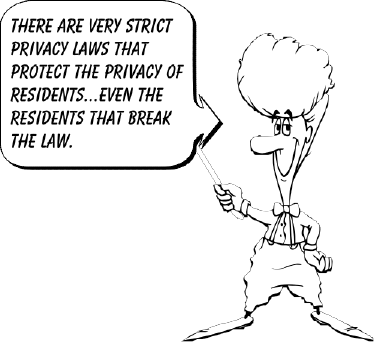
Workbook – 06-2012
64
San Diego Police Department Crime-free Multi-Housing Program
Privacy Laws
There is another very key issue to be addressed. That is
the issue of privacy laws. A police officer cannot stop by
in person, or leave a card in the office telling you the
“who, what, when, where, why and how.”
The officer is more likely to give you a case number, and
as a matter of public record, you can request a copy of the
police report. Always try to get the case number if you get
nothing else. While the officer may not be able to give
you the names of the persons involved, they may be able
to give you the unit number they went to.
How to Approach the Officer
If you see a police officer at one of your rental units, do not interfere -- stay back. The situation may
become very volatile at any moment. The officer may order you to stand back for your own safety.
If you are certain things are settled, you can get the officer’s attention and introduce yourself as the
manager and ask to see the officer when he/she is through with the call. The less you say at this
point, generally the better. Stand at a safe distance, but wait for the officer. Do not go back to the
office.
When the officer is finished, let them know you are working with the San Diego Crime-free Multi-
housing Program, and get a case number. Sometimes, a case is not drawn up and no report will be
written. The officer will let you know.
If the officer is able to give you more information, it will help you follow through with the necessary
steps you must take. If not, get a copy of the report. Let the officer know that you do plan to follow
through, and you would appreciate working with them in the future.
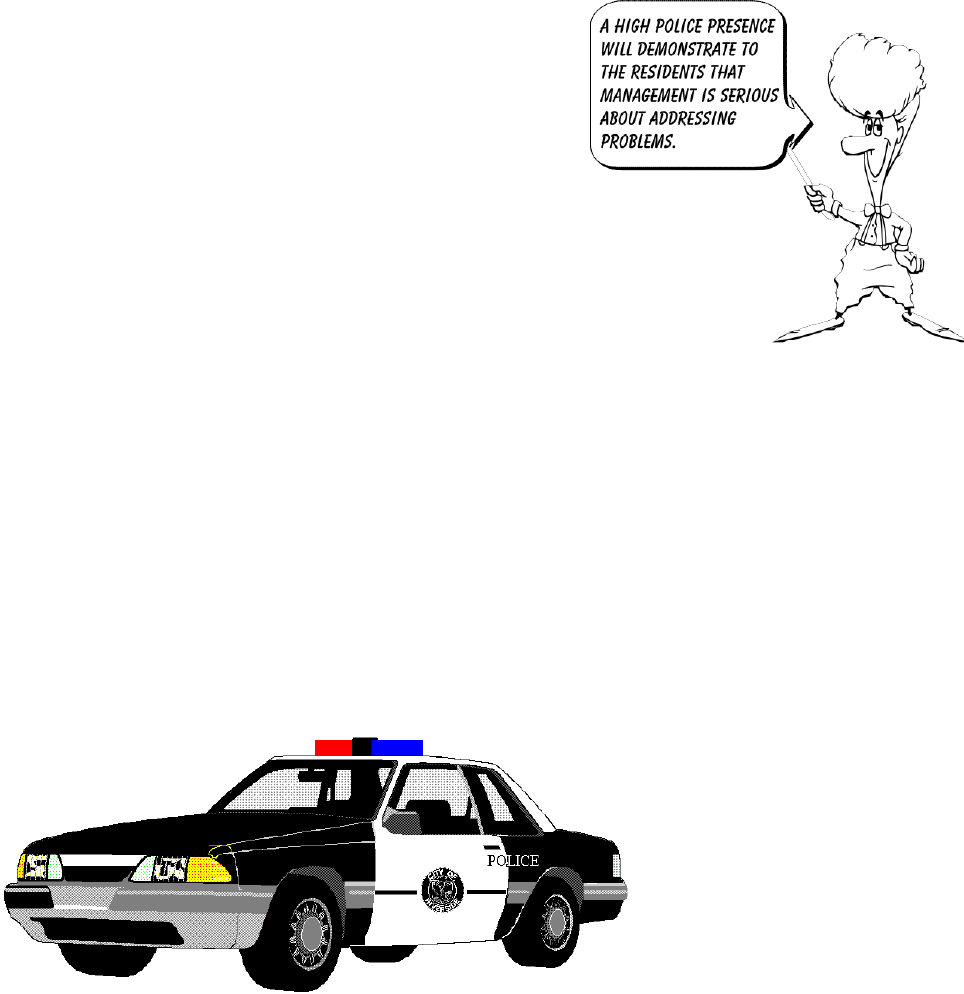
Workbook – 06-2012
65
San Diego Police Department Crime-free Multi-Housing Program
Establishing More Security
If a property manager has a serious problem with crime,
they may choose to hire off-duty officers to patrol the
property. This is a very effective way to solve serious
problems with residents. If a manager cannot do that,
they may want to consider private security.
Requesting “Extra” Patrol
Frequently managers will call requesting “extra” patrol.
While it never hurts to ask, it may not help either. There
are hundreds of rental properties in San Diego, many more
properties than we have patrol officers. One thing they all
have in common is they all want “extra” patrol visits
through the property.
Then there are the mobile home park managers that call because several of their vacationing
owner’s mobile homes were burglarized. They all want “extra” patrol, too.
Let’s not forget the managers of the grocery stores that call the police looking for “extra” patrol
because a customer got a purse stolen, or a car was stolen from the lot. There are more stores than
there are patrol officers.
Plus, of course, there are thousands of residents who want “extra” patrol in their residential
neighborhoods. Everyone wants to see more police patrols in
their neighborhoods.
There are still others
who feel the police
ought to spend more
time writing tickets for
speeders and people
who do not use turn
signals. There just are
not enough police
officers to fill all those
needs.
Unfortunately, the police officers cannot provide security for everyone who asks. Even if they could
visit the property a couple of times per day, the likelihood that they would be at the right place at
precisely the right time is very slim. The best efforts will include officers that can spend hours at the
property. Random passes through the property are ineffective, and often not possible.
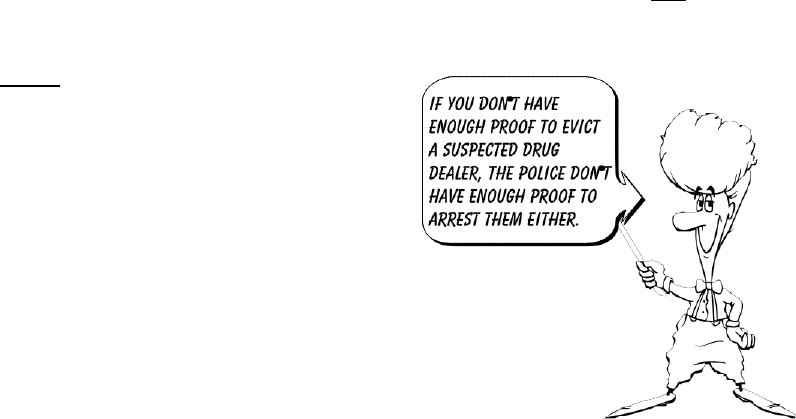
Workbook – 06-2012
66
San Diego Police Department Crime-free Multi-Housing Program
Narcotics Surveillance
Property managers will also call the police requesting a narcotics detective to set up surveillance on
a resident they suspect of using drugs. While managers are aware the detectives are not sitting by the
phone hoping somebody will call soon, they may not know how many calls are received.
Narcotics detectives are highly trained and do excellent work because they have methods that work
so well. Typically, they rely on a person to “introduce them” to a suspect whenever possible. If they
can get close to an operation, they are more likely not only to make an arrest, but to arrest several
people. If the quantities are high, they are likely to get prison time for the offender. The higher up
the supply line that they penetrate, the more successful the operation.
The end user is not going to get the prison time or produce all of the other results the detectives are
after. They want the “bigger fish” to fry. They work the more serious cases. There are more calls
than the police have detectives. It is a matter of priority.
Management Surveillance
You should call to report the drug activity, because you may be providing the very key information
the police have been looking for. You should also document other behaviors associated with the
drug activity, and serve the appropriate notices. There
is usually a string of other evictable offenses that
managers overlook, trying to prove somebody is into
drug activity.
Rarely have property managers confronted residents with
their suspicions, yet they call the police. When asked why
they have not confronted the resident they say, “I do not
have any proof.” Think about that. The police need a lot
more proof than the manager does. The police cannot
do anything without proof.
Why can’t the police just watch and “get” the proof?
There just are not enough detectives available. The better
question is, “Why don’t the property management teams
watch the resident and get the proof?” It is much easier for those who live and work on the property
to watch what is going on. They know who lives at and belongs on the property; the police do not.
Because management needs a lot less proof than the police, they will get faster results civilly.
Setting up video cameras or recording license plates may provide clues, but they may also spark
retaliation from the resident. Whatever action is taken, safety should always be foremost.
Workbook – 06-2012
67
San Diego Police Department Crime-free Multi-Housing Program
“But I’m Scared!”
Because the potential for danger is there, property managers should be more selective and
forceful with prospective residents. If policies are not strictly stated in the beginning, they will be
harder to enforce in the end. Prevention is the key.
Most residents will stop drug activity if they find out the manager is “onto them.” The reason most
people continue this activity is because they know the manager is afraid to confront them. Even if
the police arrest a resident, you will have to evict them and others on the lease. They will come back
awaiting trial in most cases.
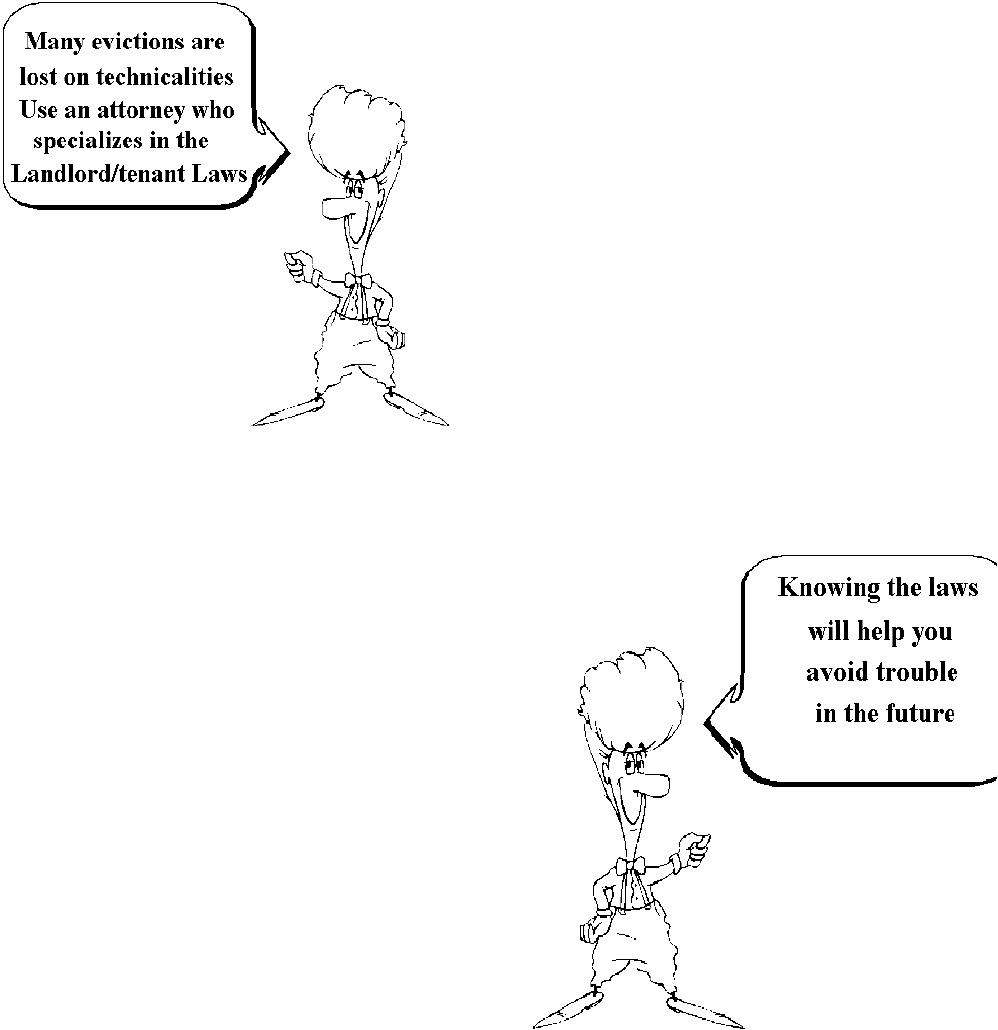
Workbook – 06-2012
68
San Diego Police Department Crime-free Multi-Housing Program
PART
ELEVEN
D
D
E
E
A
A
L
L
I
I
N
N
G
G
W
W
I
I
T
T
H
H
N
N
O
O
N
N
-
-
C
C
O
O
M
M
P
P
L
L
I
I
A
A
N
N
C
C
E
E
First Things First
Many property managers use attorneys that have
experience with landlord/tenant issues. The best
attorneys are usually the ones that specialize in
the landlord/tenant practice. Because many
evictions are lost on technicalities, the cost for an
attorney may save a lot of money down the road.
If a resident retains an attorney and their attorney
sees that everything has been handled properly,
they are less likely to fight an eviction. If the
attorney sees the manager made mistakes in the
process, they are more likely to fight the eviction,
and ultimately win.
Do Your Homework
The basic state laws that regulate the landlord business
are the California Civil Code and Code of Civil
Procedure. If you have trouble understanding the law,
work with another person, or sign up for a class. Knowing
the laws will help you avoid trouble in the future.
Attend an unlawful detainer hearing in the San Diego
Courts located at 220 W. Broadway, San Diego,
California. It is a great way to get prepared so you will
not be nervous when it is your day in court. If you see
what others are doing right or wrong, it will help you
when it’s your turn.
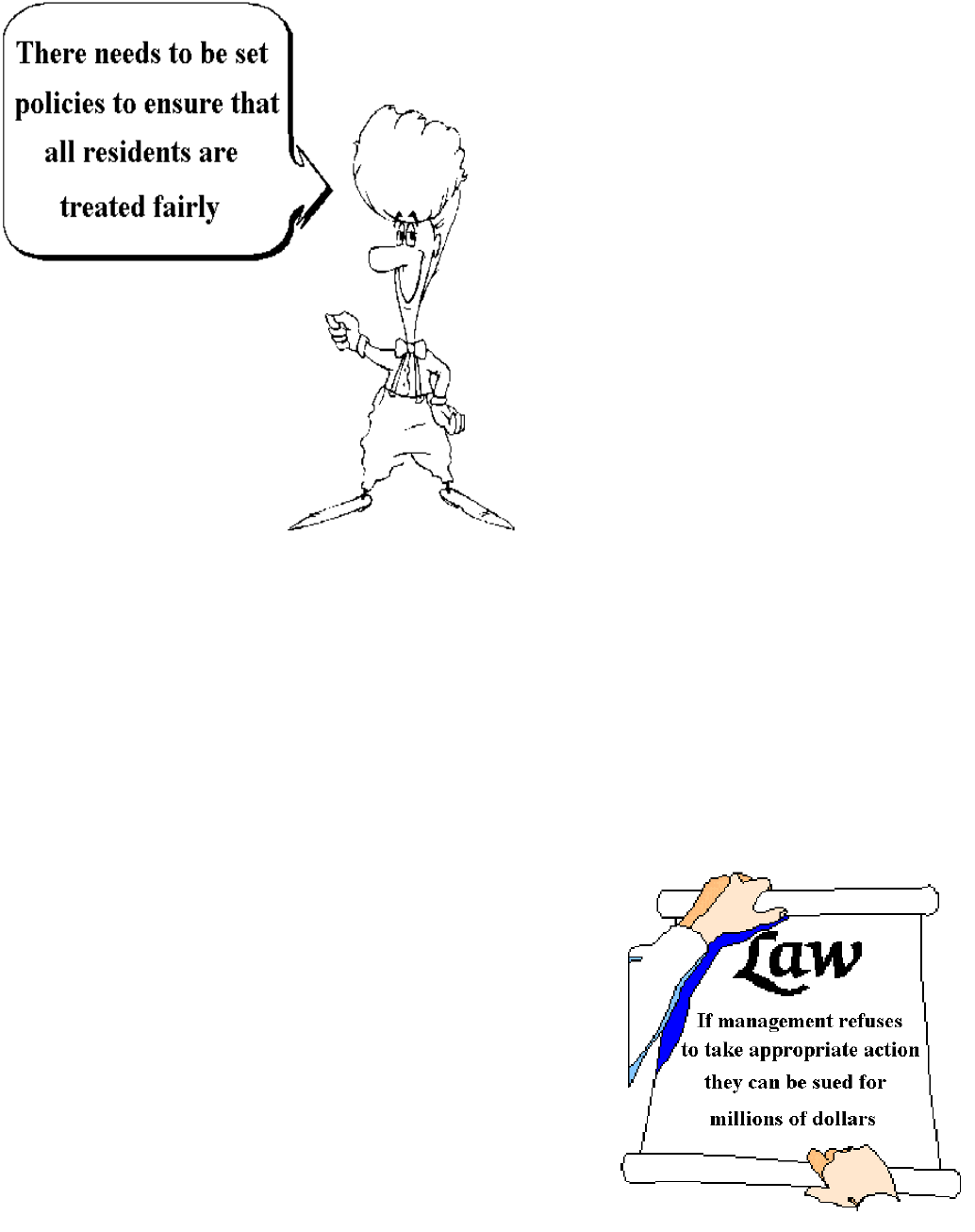
69
San Diego Police Department Crime-free Multi-Housing Program
Workbook – 06-2012
Set Your Policies
It is essential that property managers
are fully aware of their options when it
comes to a resident’s non-compliance
with a lease agreement. There needs to
be set policies to ensure that all
residents are treated fairly, yet
effectively. Just as with applicant
screening, special care should be given
to guarantee each resident is treated
equally.
Some property managers use a
progressive method for dealing with
non-compliance. They might begin by
sending a personal note, and the next
time send an official notice. Some
managers will make a personal contact
first, then follow-up with an official
notice. With some managers, it depends
on the resident.
The best policy is to follow company policy. That usually means you will send written notice, and
document the incident immediately in the resident’s file. A policy should be applied equally and
fairly to all residents.
Don’t Be Complacent
If a manager turns a blind eye to non-compliance, he or she takes a risk:
He or she may lose her right to evict for the non-
compliance at a
later date. This is especially true if a
manager accepts rent from a
resident with an unauthorized
pet or resident.
The resident may get progressively worse, and then the
situation will be more volatile.
Other residents may get the impression they can get away
with the same non-compliance. Do not make a rule unless
you plan to enforce it.
If management refuses to take appropriate action against
a non-compliant resident and this leads to an injury or
death of another resident, the management could be sued
for millions of dollars, as well as deal with their own
responsibility for the death or injury.

San Diego Police Department Crime-free Multi-Housing Program
Workbook – 06-2012
Know Your Responsibilities
If a notice is improperly served, or if the wrong notice is used, the case will likely be dismissed. In
some cases, the manager may lose more than the judgment. For example, if a manager enters a unit
to tape a notice to the bathroom mirror, that is not a proper service. If they entered without serving a
24-hour notice, they have made a second mistake, which may entitle the resident monetary damages.
Each process has special requirements that management needs to understand. If a property manager
is unsure, they should seek the help from an attorney, or another person familiar with landlord/tenant
law.
Service of Notice and Documents
A) Personal Service
If a manager chooses to serve a notice personally, he or she needs to be aware of what constitutes
a good service. Most importantly, the person being served should be the resident.
The resident does NOT have to sign the notice, or even touch it. If the resident sees you, puts their
hands into their pockets and says, “I am not touching that!” you only need to say, “You are served!”
and drop the notice. If the resident slams the door in your face, you may slide the notice under
the door. If the resident jumps into his car and locks the door, you can place it on their windshield
and tell them they are served.
There needs to be a personal contact with the resident. Taping it to their refrigerator where they will
be SURE to see it does not amount to a good service.
70

San Diego Police Department Crime-free Multi-Housing Program
Workbook – 06-2012
B) Substituted Service
If you are unable to locate the resident at either home or work, the law allows you to use
"substituted service" in lieu of personally giving the notice to the resident. In order to serve the
notice this way, you must make at least one attempt to personally serve the resident at home and at
work, leave a copy of the notice with someone over the age of 16 at the resident's home or work,
and mail a copy to the resident by ordinary first-class mail. You must ask for the name of the
person with whom you leave the notice and include it in your proof of service when you file your
lawsuit. Substituted service of the notice is not completed, and the period specified in the notice
does not start running, until you have left the copy with the "substitute" person and mailed the
second copy to the resident at home. The first day of the notice's period is the day after both of
these steps are accomplished.
C) Post and Mail Service
If you cannot find the resident or anyone else at their home or work, or do not know where they
are employed, you may serve the notice through a procedure known as "posting and mailing",
also known as "nail and mail." To serve the notice this way, you must make at least one
unsuccessful attempt to personally serve the resident at home and at work, post a copy of the
notice on the front door of the resident's rented or leased premises, and mail another copy to the
resident at home by first- class mail.
Pursuant to California Code of Civil
Procedure §1013, the service is
complete at the time of depositing it in
the mail, but any period of notice and
any right or duty to do any act or make
any response within any period or on a
date certain after the service of the
document, shall be extended five days.
71

72
San Diego Police Department Crime-free Multi-Housing Program
Workbook – 06-2012
Success Stories of The Crime-free Multi-housing Program
Summary of Notices
Three-day Notices
Before filing a court action to force the resident to vacate the rental unit, California law requires
that the tenancy be terminated. To legally terminate a tenancy, the landlord must give the resident
written notice.
Failure to Pay Rent: Notice to Pay or Quit
This notice is used when the resident has failed to pay his or her rent on time as specified in the
rental agreement. If within three days after the notice has been properly served, the resident offers
the entire amount demanded, the termination of tenancy is ineffective and the resident can remain
on the premises. If the resident does not pay the demanded amount, unlawful detainer
proceedings may commence.
Violations of Rental Agreement/Property Damage to Premises: Notice to Perform Covenant or Quit
This notice is used for substantive rental agreement violations, property damage, or nuisance acts.
There are two types---conditional and unconditional. The Notice to Perform or Quit gives the
resident the option of staying if he or she corrects his or her behavior within the three-day period.
If he or she does not, the tenancy is considered terminated, and unlawful detainer process may be
pursued. Examples of when this notice is used include:
-the resident is violating the "No Pets" provision of the lease;
-the resident has failed to pay separate utility charges;
-the resident has refused the landlord access to the premises.
The other three-day notice simply tells the resident to move out in three days, without an option
to correct her behavior. This unconditional surrender of the premises notice may be used when:
-the resident has sublet all or part of the premises to a third person
contrary to the rental agreement;
-the resident is causing a legal nuisance by seriously interfering with
the neighbor's ability live normally in their homes (i.e. loud parties,
drug dealing);
-the resident is causing a great deal of damage to the rental property
(i.e. breaking windows, punching holes in walls, ripping carpet).

73
San Diego Police Department Crime-free Multi-Housing Program
Workbook – 06-2012
Thirty-day Notices
In the case of a rental agreement rather than a lease, a landlord may terminate the tenancy for no
reason by giving the resident a 30-day written Notice of Termination of Tenancy. However,
the landlord may not terminate the tenancy based on race, marital status, religion, sex, age, or
sexual preference.
You may prefer to use a 30-day notice instead of the three-day notice, since you do not have to
prove your reason for eviction under the 30-day notice. In addition, a resident who receives a
three- day notice is more likely to defend the unlawful detainer in order to get revenge, vindicate
his reputation, or gain additional time to move out of the premises. Using the 30-day notice gives
the resident time to rethink his position and allows him to move out under less pressure.
Furthermore, a three-day notice violation requires significant documentation and credible testimony.
Typically, a Judicial Officer will not order an eviction based on a three-day notice for minor rental
agreement violations or property damage.
In summary, evictions based on the three-day notice should only be pursued when the problem is
serious and time is of the essence.
The Ultimate Detainer Procedure
In San Diego County, the unlawful detainer proceedings may be pursued pursuant to Chapter Four
of the California Civil Code of Procedure, commencing with §1159, or the expedited unlawful
detainer procedure, commencing with §1167.2.
The major difference between using the traditional and expedited unlawful detainer procedure is
time. The traditional procedure can take up to 60 days or more to obtain a writ of possession, while
the expedited process can take as little as 13 days.

74
San Diego Police Department Crime-free Multi-Housing Program
Workbook – 06-2012
PART
TWELVE
F
F
I
I
R
R
E
E
D
D
E
E
P
P
A
A
R
R
T
T
M
M
E
E
N
N
T
T
M
M
A
A
N
N
U
U
A
A
L
L
Forward
Perhaps nothing is as devastating as fire out of control. Fire can kill, disable, and completely disrupt
people's lives. Fire can ruin businesses and destroy livelihoods. According to the US Fire
Administration, 20 % (percent) of fires in the United States occur in apartments.
This training is provided to help equip you with the information you need to significantly reduce the
possibility of fire occurring in your complex. If you have questions pertaining to any information
contained in this manual, contact the:
San Diego Fire/Rescue Department at 619-533-4300.
The San Diego Fire/Rescue Department is grateful to the Riverside and Mesa Arizona Fire
Departments for developing the original material contained herein.

75
San Diego Police Department Crime-free Multi-Housing Program
Workbook – 06-2012
Exiting Systems
The most important aspect of fire safety is getting everyone out
quickly and safely. All exit corridors, doors, and stairways must
be safely maintained at all times.
Keep stairways free of obstructions at all times. Anything which may render the stairway
unusable should be kept away from stairs. Propane barbecue grills, motorcycles, and
combustible materials should not be stored under stairs.
If there are interior corridor systems, ongoing maintenance is necessary.
1. Keep all storage and obstructions out of corridors.
2. Maintain and test emergency lighting monthly. Check for burned out bulbs, low and
dead batteries.
3. Maintain exit signs. Replace burned out bulbs as soon as possible.
4. Fire doors along the corridor should be maintained self-closing, self-latching
(especially laundry and utility rooms) and not propped open. Properly maintained
fire doors can hold back fire and smoke from the corridor, allowing residents time
to get out.
5. Post evacuation plans in common areas of the complex. Each plan must indicate two
exits from each area and a safe place for everyone to congregate. Provide evacuation
information to new residents regarding procedures to be followed if the fire alarm
is activated.
Address
It is very important that address numbers are easily seen from the street to assist emergency
personnel in quickly locating the appropriate address.
The complex address numbers should be at least six inches in height, contrast with the
background, and be visible from the street.
Post apartment numbers conspicuously, contrasting with background, and at least three
inches in height.
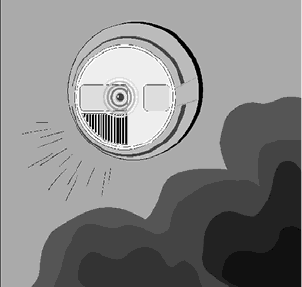
76
San Diego Police Department Crime-free Multi-Housing Program
Workbook – 06-2012
Fire Alarm Systems
Fire alarms are designed to notify residents of a fire in time to safely evacuate a building. Building
managers should consider providing residents with information to assist them in planning their
evacuation. Keep fire alarm systems in proper operating condition at all times. A copy of the
testing/maintenance report shall be made available to the fire department upon request.
Complete regular testing and maintenance by qualified personnel.
This includes, but is not limited to, testing all devices, cleaning all
smoke detectors, checking battery levels, etc. Documentation may
be requested by insurance underwriters seeking verification that
reasonable efforts are being made to maintain the system in good
working order.
Note: A trouble condition, indicated on the alarm panel by a
yellow light, can be caused by numerous conditions. This
situation requires contacting qualified service personnel to
troubleshoot and correct the problem
False alarms, besides being annoying, can cause residents to become “desensitized” to the alarm
and possibly to disregard it. Proper maintenance can help avoid this situation. Occasionally, manual
pull stations are maliciously pulled. If this occurs frequently, contact the San Diego Fire/Rescue
Department for assistance.
Fire Sprinkler Systems
Fire sprinkler systems are the most effective means of controlling fires, minimizing fire spread and
damage caused by smoke and fire. Sprinkler heads are strategically placed throughout apartment
living areas. Activated by heat, only those heads near the fire will discharge water. Fire sprinkler
systems do require regular testing and maintenance. A copy of the report shall be made available
to the fire department upon request.
Testing and maintenance of fire sprinkler systems
1. Fire sprinkler systems require at least annual testing and maintenance by a qualified
contractor. Reports shall be made available to the fire department upon request.
2. Standards for testing and maintenance of fire sprinkler systems are outlined in NFPA 25
(Standards for the tests and maintenance of water-based fire protection system, 2011
edition.)
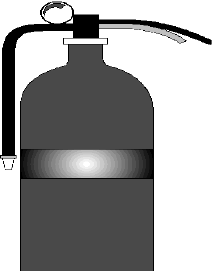
77
San Diego Police Department Crime-free Multi-Housing Program
Workbook – 06-2012
Central station monitoring
1. If the sprinkler system has 100 or more sprinkler heads, the system is required to be
monitored by an alarm monitoring company for water flow and tamper. Tamper
switches must be attached to the control valves. These switches will send a signal
to the alarm monitoring company to notify them that someone is turning a valve.
If the fire sprinkler system has less than 100 sprinkler heads, lock sprinkler system
control valves in the “open” position to avoid tampering by unauthorized persons.
Fire Extinguishers
Fire extinguishers, when operated by a person knowledgeable in their use,
can significantly reduce fire damage. Training is essential. If you have a
fire extinguisher available, be sure it is a Class ABC extinguisher, with a
testing laboratory label. Use an extinguisher only if...
1. The fire department is being called (9-1-1).
2. The building is being evacuated. Activate fire alarm, if available.
3. You know you have a Class ABC extinguisher and already know how
to operate it.
4. The fire is small and contained in the area where it started.
5. You can fight the fire with your back to an exit.
If any of these is not true, get out immediately and dial 9-1-1. Training information pertaining to fire
extinguishers is available from San Diego Fire/Rescue Department.
Keep fire extinguishers in good working order at all times. Be sure they are mounted in
conspicuous, accessible locations. Annual servicing by qualified personnel and monthly inspection by
maintenance personnel is required.
Fire Lanes
Fire lanes are designed to provide direct access for emergency activities and emergency vehicles.
Most frequently, they are used for fire apparatus during medical emergencies. When fire lanes are
blocked by vehicles, a delay in receiving emergency assistance may occur. In a fire or medical
emergency, seconds count. Proper signage is very important to enforce no parking in the fire lane.
The police department will cite vehicles illegally parked and may assist apartment managers with
enforcement. Contact San Diego Fire/Rescue Department Fire Prevention Bureau at 619-533-4300
for information on signage wording and placement.

78
San Diego Police Department Crime-free Multi-Housing Program
Workbook – 06-2012
Use 9-1-1 for ALL Emergencies
Emergency Medical Services
Learn CPR. Look in the yellow pages of your phone book under First Aid Instruction.
Place 9-1-1 stickers, your address and phone number, and emergency numbers on or near the
phone.
When dialing 9-1-1, be sure to answer all the dispatcher's questions and follow their
directions. Speak slowly and stay calm. Stay on the phone until instructed to hang up.
Provide specific information about where the emergency is taking place. For example, the
building number, apartment number, nearest entrances, which pool, etc.
To direct emergency personnel to the scene, turn on an outside light and, if available, send
someone out to meet them.
Unlock gates or doors leading to the apartment so firefighters can make entry.
Pool Safety
Many water-related incidents occur each year. These frequently involve young children, but adults
can also be victims. Water-related incidents include not only drowning, but near drowning, which
can leave the victim severely brained damaged. Also, diving from other than designated areas can
cause head and spinal cord injuries if the victim strikes his/her head on the bottom. Permanent
paralysis can result. Alcohol consumption may precipitate water-related incidents by impairing
judgment.
Adults, as well as children, should never swim alone. Children must always be directly
supervised by an adult.
Provide approved life-saving equipment, such as a pole with a hook or a Styrofoam ring, in
the pool area.
Persons supervising others should know cardiopulmonary resuscitation (CPR).
Interior perimeter pool fences should be installed. Fences should be at least five feet in
height, with self-closing and self-latching gates 42 feet above grade, which should be
checked frequently. Vertical bars should not be spaced more than four inches apart.

San Diego Police Department Crime-free Multi-Housing Program
Workbook – 06-2012
Keep pool area free of toys and other objects that might attract children.
Keep tables and chairs away from the outside of the interior perimeter fence, so children
cannot climb over the fence by using furniture or other objects.
Do not allow pets in the pool area when young children are present.
Post pool rules conspicuously and enforce them. Suggested rules include:
1. Children must always be directly supervised by a responsible adult.
2. Rules addressing the consumption of alcoholic beverages should be considered.
3. Roughhousing is not allowed.
4. Dive only from the diving board, not from the side of the pool.
5. Gates must be closed after entering or exiting the pool area; never prop them open.
6. Glass containers are not allowed in the pool area.
It is recommended a telephone be near the pool, with 9-1-1 posted for emergencies.
Single Station Smoke Detectors
All residential units are required to have single station smoke detectors installed. These smoke
detectors may be battery operated or hard wired into the unit’s electrical system. Smoke detectors
should be checked monthly by the occupant for proper operation. Batteries should be changed
annually or sooner if required.
79

San Diego Police Department Crime-free Multi-Housing Program
Workbook – 06-2012
Chemical Storage – Flammable & Combustible Liquids Storage
Pool chemicals:
Store pool chlorine and muriatic acid separately in a well-ventilated area.
Flammable and combustible liquids:
Store gasoline in approved safety cans only. Do not exceed five gallons. Place caps tightly on
container. It is recommended that flammable and combustible liquids be stored in a well-ventilated
area, away from open flame (i.e. gas water heaters and other ignition sources).
Combustible and flammable liquids stored in excess of ten gallons, must be stored in an approved
flammable liquid storage cabinet. Contact San Diego Fire/Rescue Department for cabinet
specifications.
Cooking Inside Clubhouses & Recreational Areas
Cooking is a frequent cause of fire loss. Cooking which produces grease (i.e. frying, browning of
meat) is not allowed unless an approved grease removal system and extinguishing system have
been installed. When an extinguishing system has been installed, servicing every six months by
a qualified contractor is required. All cooking areas, hood and ducts should be kept free of
grease accumulation.
Locks/Lock Boxes
At least two vehicular access points into larger complexes may be required for fire department
access. Gates may be locked, however, they must be able to be readily opened by the fire
department. Prior to closing any gates to vehicular access, contact the San Diego Fire/Rescue
Department to determine if that access is required for the fire department. The City of San
Diego uses a lock security system Knox Box to access locked areas and will assist you in setting
up a locking arrangement that fills your needs and of emergency crews. For more information,
contact Steve Carroll at 619-533-4300.
Heating & Ventilation Units
Heating and ventilation units require regular service. Develop and use preventative maintenance
programs for all mechanical equipment. Keep motors free of grease and dust. Check filters
regularly and change them when necessary. Make sure fresh air returns/vents are kept clean and
open to prevent carbon monoxide poisoning.
80

San Diego Police Department Crime-free Multi-Housing Program
Workbook – 06-2012
Laundry Rooms
A laundry room is another area of fire hazard. Lint and combustible debris can accumulate behind
the dryer, and can ignite when heated.
Clean dryer lint screens after each use.
Dryer vents should be continuous to the outside.
Clean dryer and washer motors as needed to eliminate grease and lint accumulation.
Gas vents for water heaters and dryers should be maintained in good repair and continuous to
the outside.
Dumpsters
Locate dumpsters away from buildings. Maintain a five-foot separation from combustible
construction and eaves. The intent is that in the event of a fire in the dumpster, the fire may be
contained to the dumpster and not spread to adjacent buildings. Keep the dumpster lids closed
when not in use.
Electrical
Many apartment fires are caused by electrical problems. These include improper use of extension
cords, damaged flexible cords, overloaded circuits, and defective appliances.
Electrical installations and wiring throughout the complex should be installed by a
qualified electrician, in accordance with the National Electrical Code.
Extension cords: Do not use these as a replacement for permanent electrical wiring.
Extension cords are designed for temporary use only. They should be kept free from
damage, and the wiring size should be appropriate for the amperage of the appliance it is
supplying. Use only UL listed cords.
Flexible cords: Maintain flexible cords to appliances (i.e. lamps, toasters, etc.) in good
condition and place them where they are not subject to damage. Replace damaged,
frayed, dried, or cracked cords.
Overloaded circuits: These can occur when too many appliances are plugged into one
circuit, exceeding the capacity of the wiring, heating the wiring, and possibly starting a
fire. Never plug in more appliances than the receptacle will accept. Two plugs are
usually allowed in a typical household receptacle.
Defective appliances: Heat producing appliances are especially prone to create a fire problem
if misused or allowed to become defective. Unplug heat producing appliances (i.e.
toasters, blow dryers, curling irons) when not in use. Place space heaters at least three
feet from anything that will burn, or further if per the manufacturer's recommendation.
Never use an extension cord to supply a space heater. Space heaters should be
unplugged when sleeping or leaving the premises.
Never allow residents to run extension cords from one apartment to another to supply
power to an apartment without electricity.
81
82
San Diego Police Department Crime-free Multi-Housing Program
Workbook – 06-2012
Barbeque Grills
Use only enough charcoal lighter to start the fire. Keep the flame low. Never use
gasoline to start the fire.
Keep the grill lid closed when cooking or waiting for charcoal to properly heat.
When cooking, the grill should be constantly attended.
Have an approved fire extinguisher (5 lb. ABC) close by and know how to use it.
Let coals cool overnight or wet the ashes thoroughly prior to disposal. Dispose of ashes
by placing them into a metal container with a tight-fitting metal lid.
Keep matches, lighters, and combustible liquids out of reach and out of sight of children.
Do not use or store barbecue grills on common balconies used for exiting.
It is strongly recommended that barbecues not be used on balconies or terraces.
LPG/Natural Gas (LPG/Propane Use and Storage/Natural
Gas)
LPG cylinders (such as barbecues) should not be used or stored inside buildings or on
balconies, but preferably in a secured shaded area outside, away from building openings
and stairs. If a cylinder leaks or vents, flammable vapors may travel inside buildings.
Check rubber “O” rings and supply hose every time the cylinder is filled.
Protect natural gas meters and piping from damage by vehicles.

83
San Diego Police Department Crime-free Multi-Housing Program
Workbook – 06-2012
Working with the Fire Department
The information provided in this manual, regarding fire and life safety, is
intended to raise your awareness of safety issues and assist you in
recognizing potential problems. On-going education and training is
essential.
As a manager or landlord, you have the ability to significantly reduce
safety hazards by being observant and by following up on concerns
forwarded to you by residents.
Resident Complaints
Occasionally complaints are received and evaluated by the San Diego Fire/Rescue Department.
The first question asked is, “Have you notified your apartment manager or landlord?” If not, it is
usually suggested they notify the manager prior to any intervention by the San Diego
Fire/Rescue Department.
If fire department intervention occurs, an inspector will first discuss the concern with the
manager and perform an inspection to evaluate the situation. If a problem exists, the inspector
will then present recommended solutions to the manager and agree on a reasonable time frame for
correction.
Manager Complaints
If the resident is maintaining an unsafe condition, the fire department, when requested by the
manager, will determine if intervention is called for and the type of intervention necessary.
Often, as a manager, the lease may allow you the ability to act on a problem, depending on the
nature of the situation.
Fire Emergency Guides
A fire emergency guide shall be provided for apartment buildings (UFC 1303.3.5.3) which describes
the location, function, and use of all fire protection equipment accessible to the residents. This
includes how to activate a fire alarm system, how to maintain single station smoke detectors in the
apartments, and how to use fire extinguishers. The guide shall also include an emergency
evacuation plan for each dwelling unit. A copy of the emergency guide shall be give to each resident
prior to occupancy.
84
San Diego Police Department Crime-free Multi-Housing Program
Workbook – 06-2012
Community Newsletter
A newsletter may be helpful in keeping residents informed of important issues within the
apartment community. The fire department has information on home safety and use of fire
extinguishers which may be printed in your newsletter.
Conducting Property Inspections
If you conduct property inspections as outlined in the San Diego Police Department Crime-free
Multi-housing Program Workbook, fire safety checks can easily be included during your
inspection. Since an unsafe condition in a resident's apartment can affect other residents, it is
crucial the condition be corrected. Questions about specific problems can be addressed by
contacting the San Diego Fire/Rescue Department at 619-533-4300.

85
San Diego Police Department Crime-free Multi-Housing Program
Workbook – 06-2012
Apartment Checklist
True False
Smoke detectors are installed and operating properly.
All exterior doors and locking devices are in good working order so, in the event of a
fire, residents can exit quickly.
Windows open easily so they could be used as an alternate exit in the event of fire.
Stove vent hoods, ducts, cooking surfaces, and cabinets are free of accumulated
grease.
The apartment number is properly posted.
If a barbecue grill is used, there is a closed metal container for ash storage.
All fireplace chimneys are cleaned regularly and checked for leaks by a qualified
person.
There are no obvious electrical problems (i.e. blackened areas around electrical
plugs, badly damaged cords).
There are no excessive quantities of flammable and/or combustible liquids stored in
the apartments.
GFI (ground fault interrupter) receptacles are functioning properly. Push the test
button. The power should now be cut to the receptacle. By pushing the reset button,
power is restored. GFIs are typically installed in bathrooms and near kitchen sinks
and may prevent shock/electrocution accidents.
CORRECT ALL “FALSE” ANSWERS TODAY
